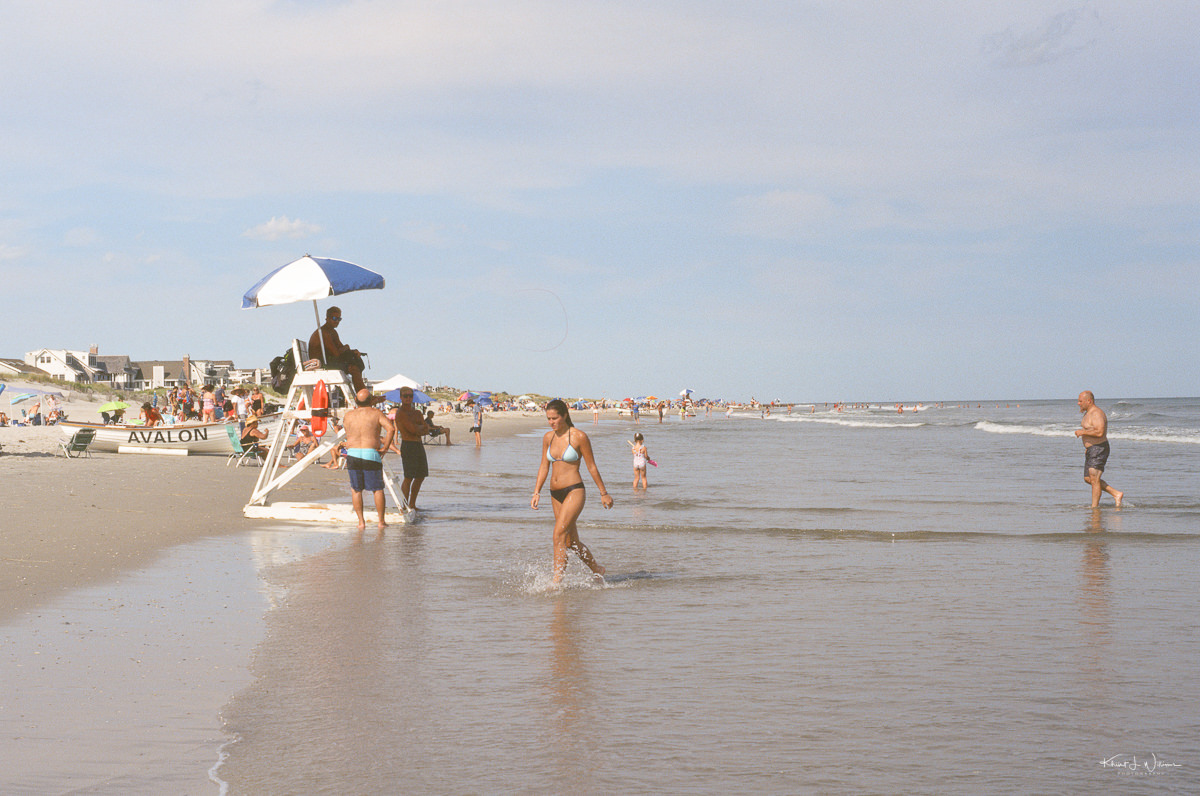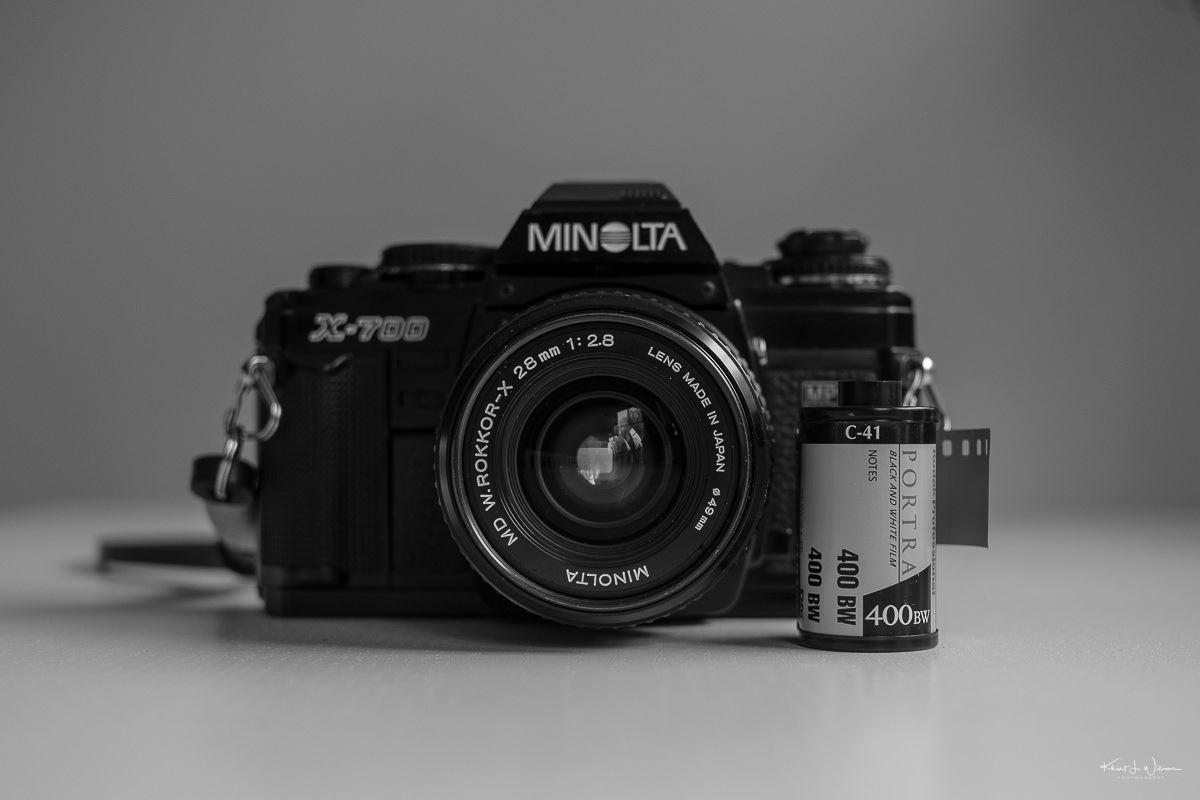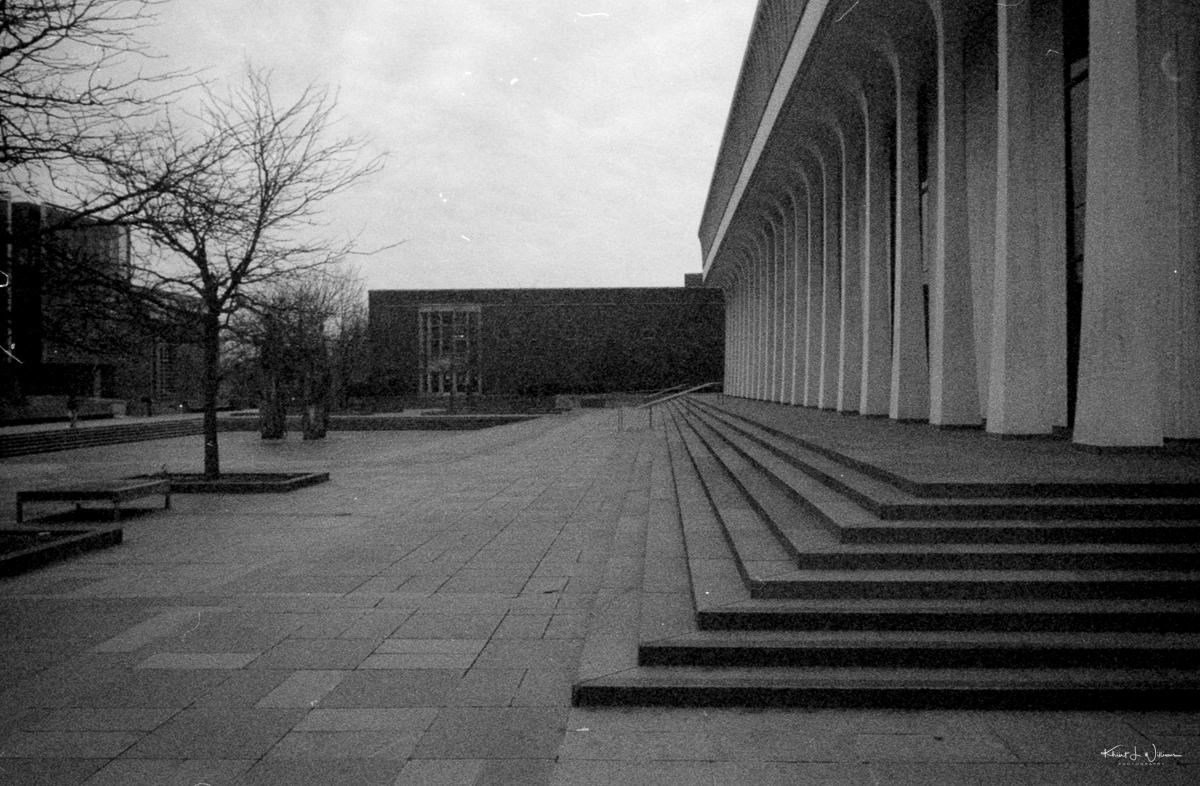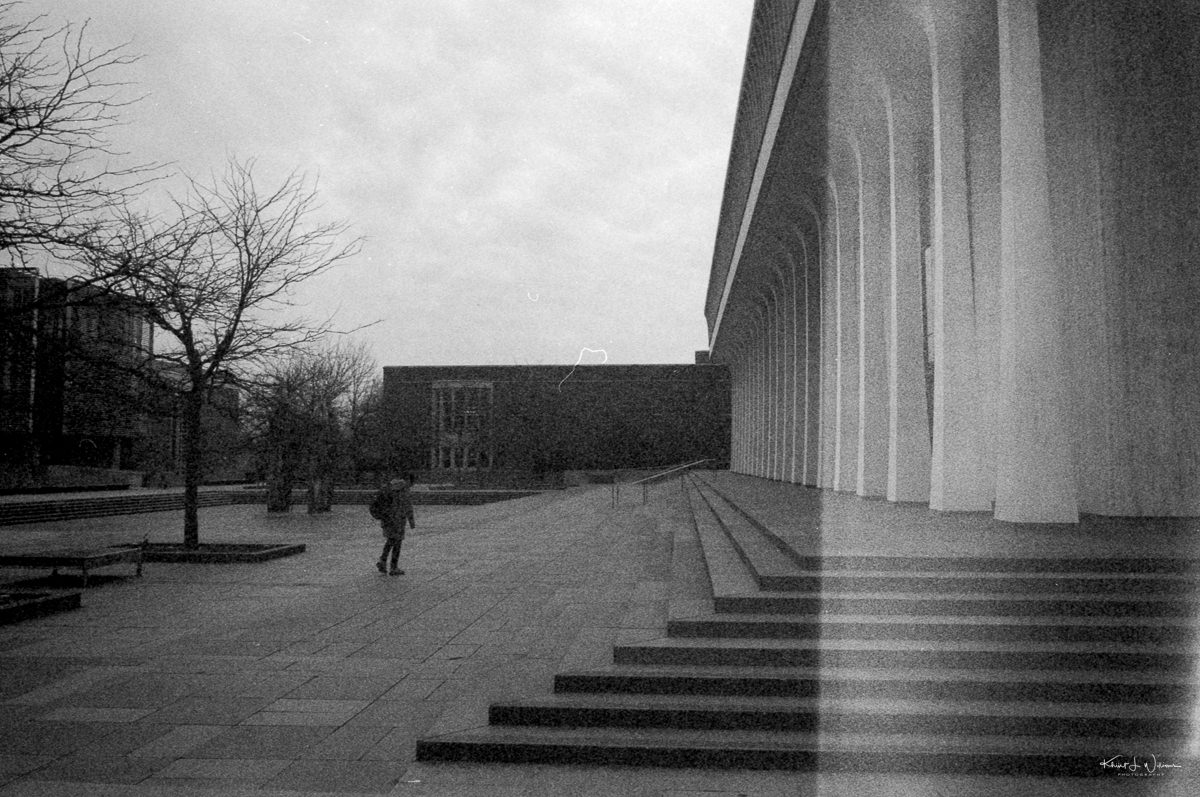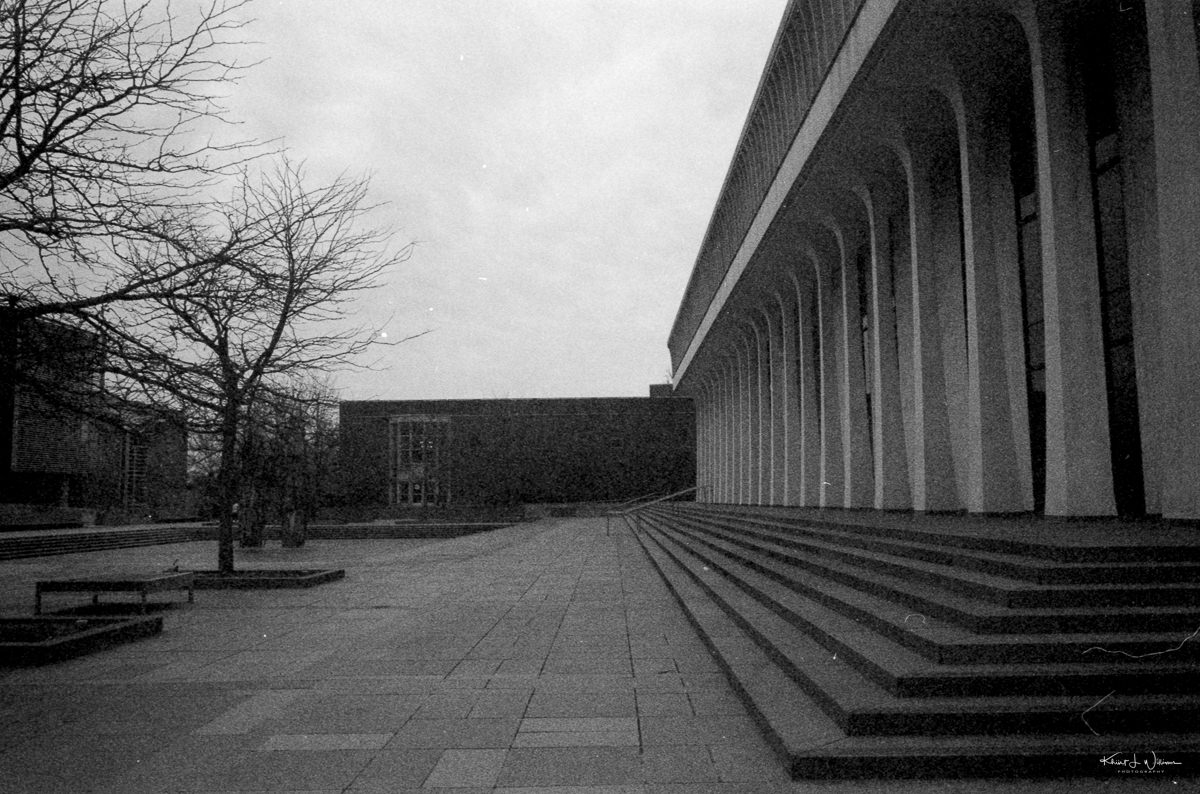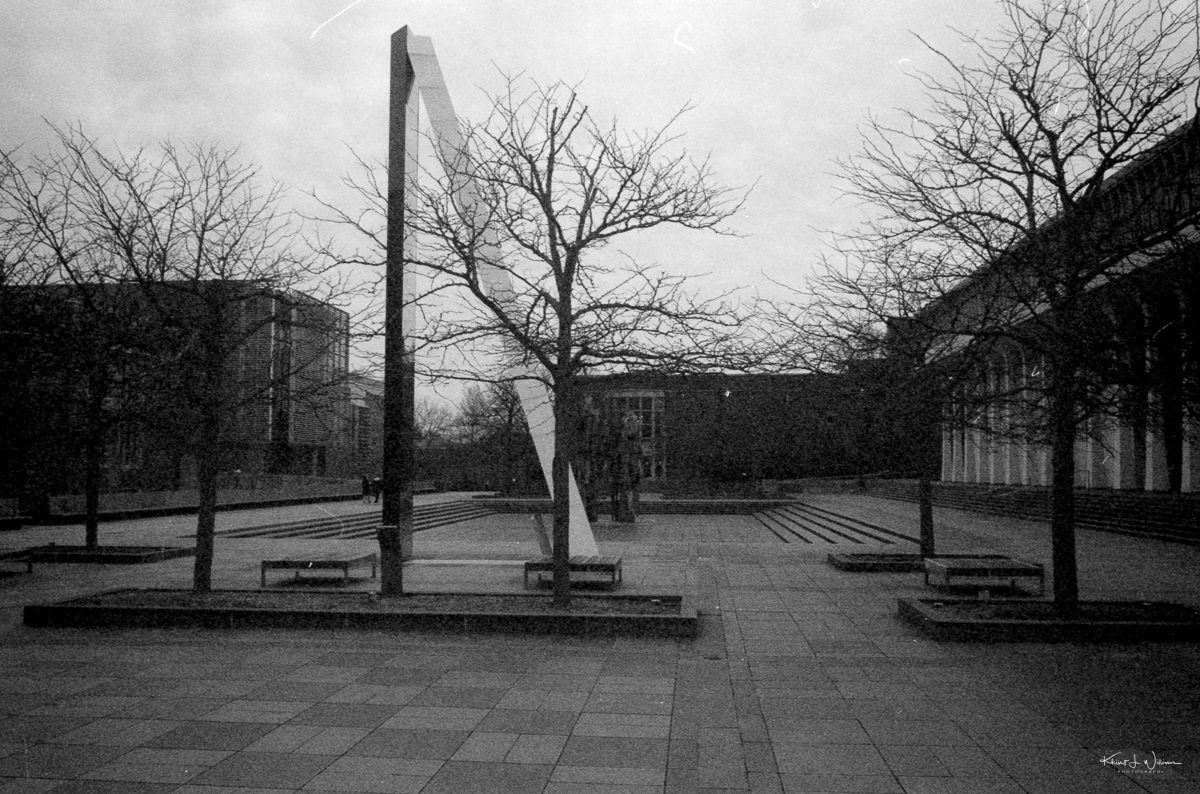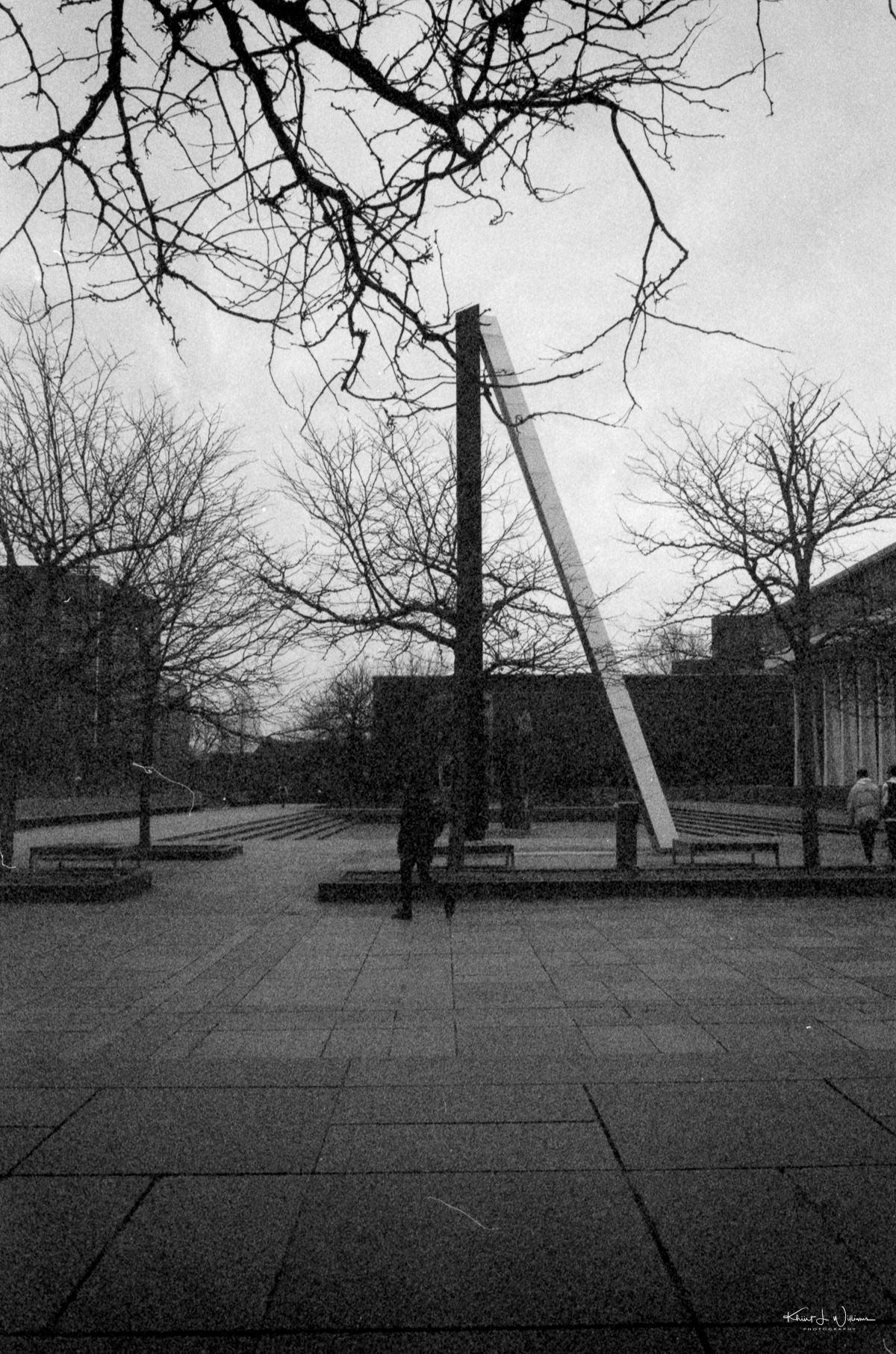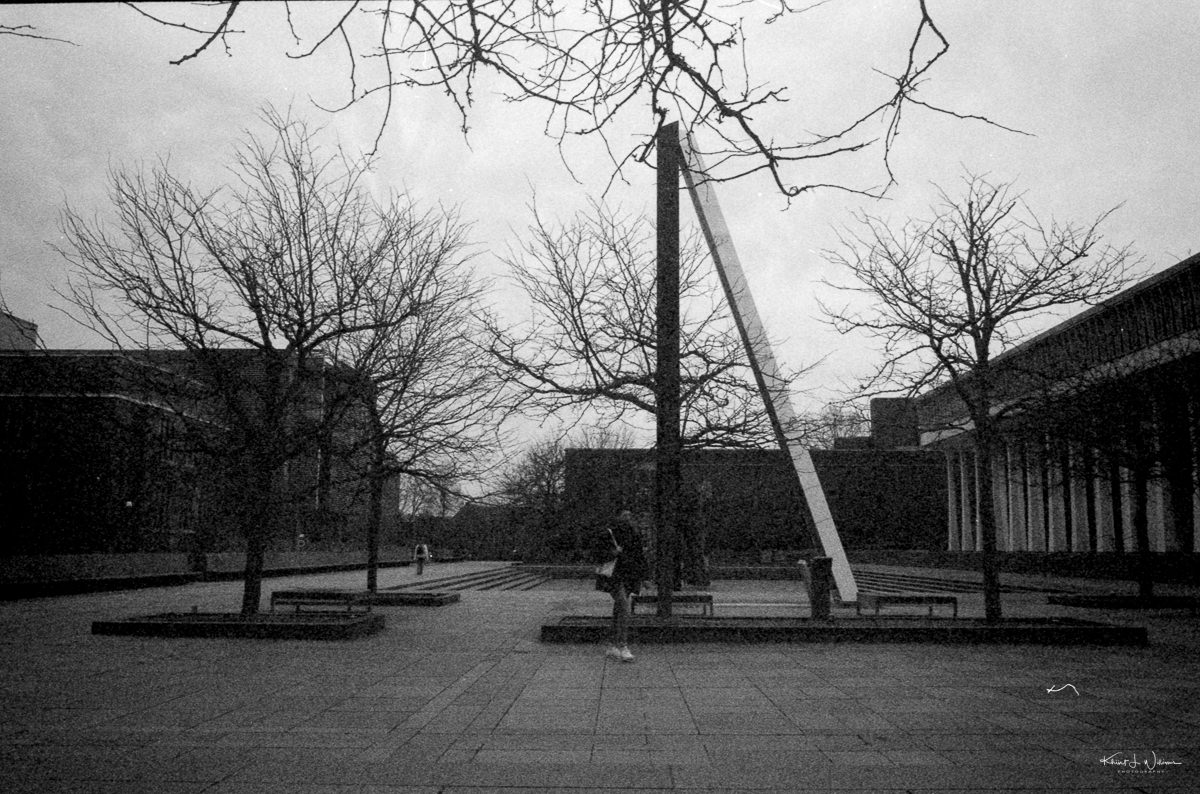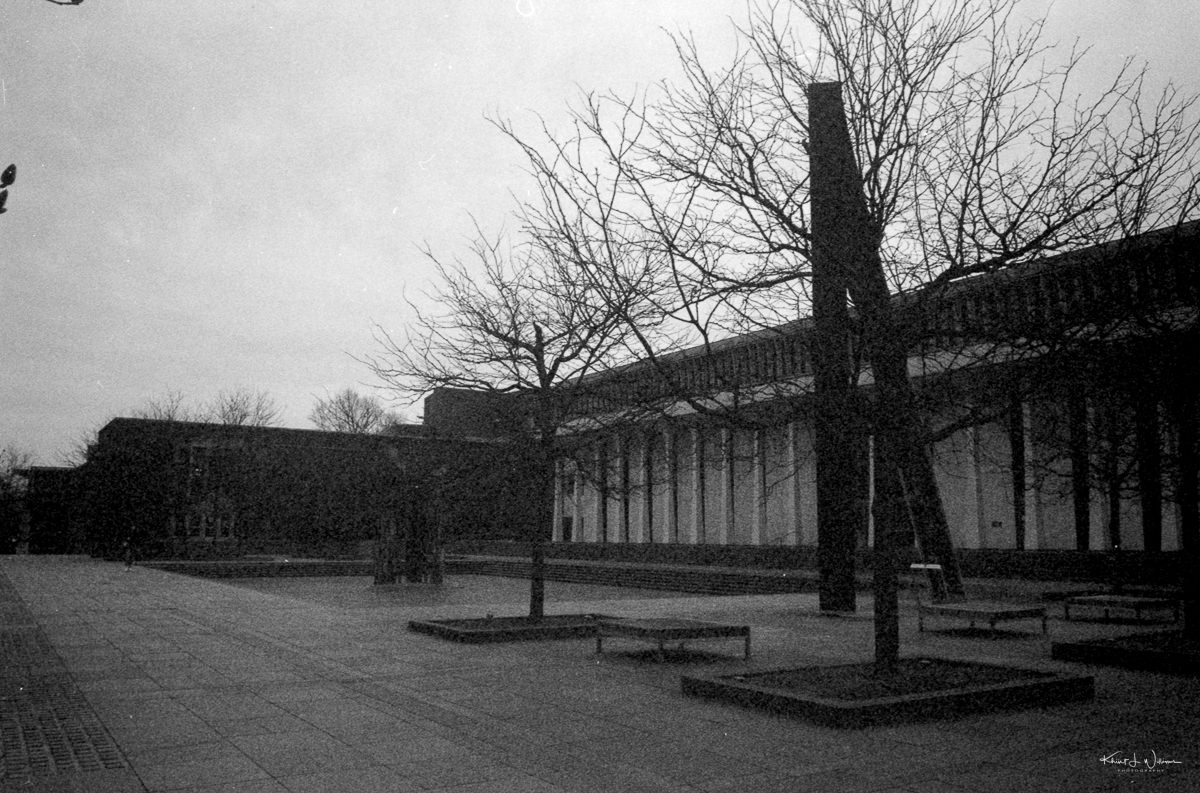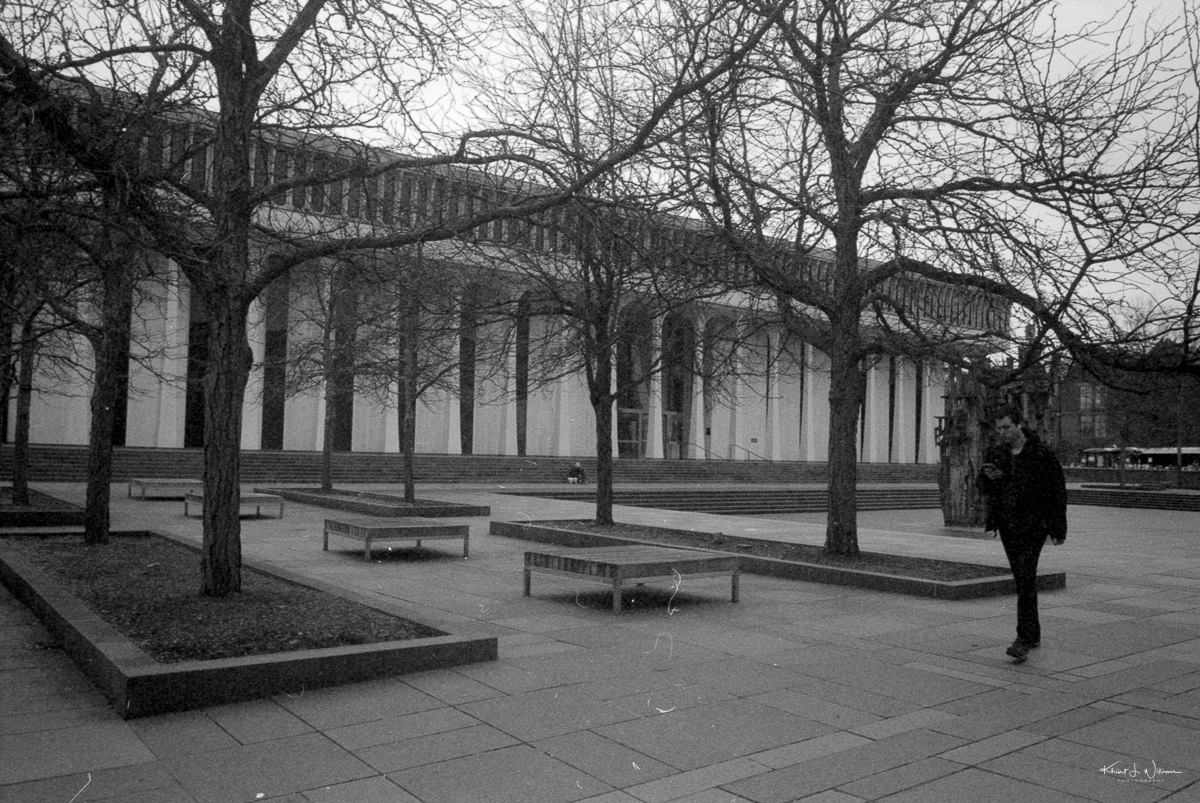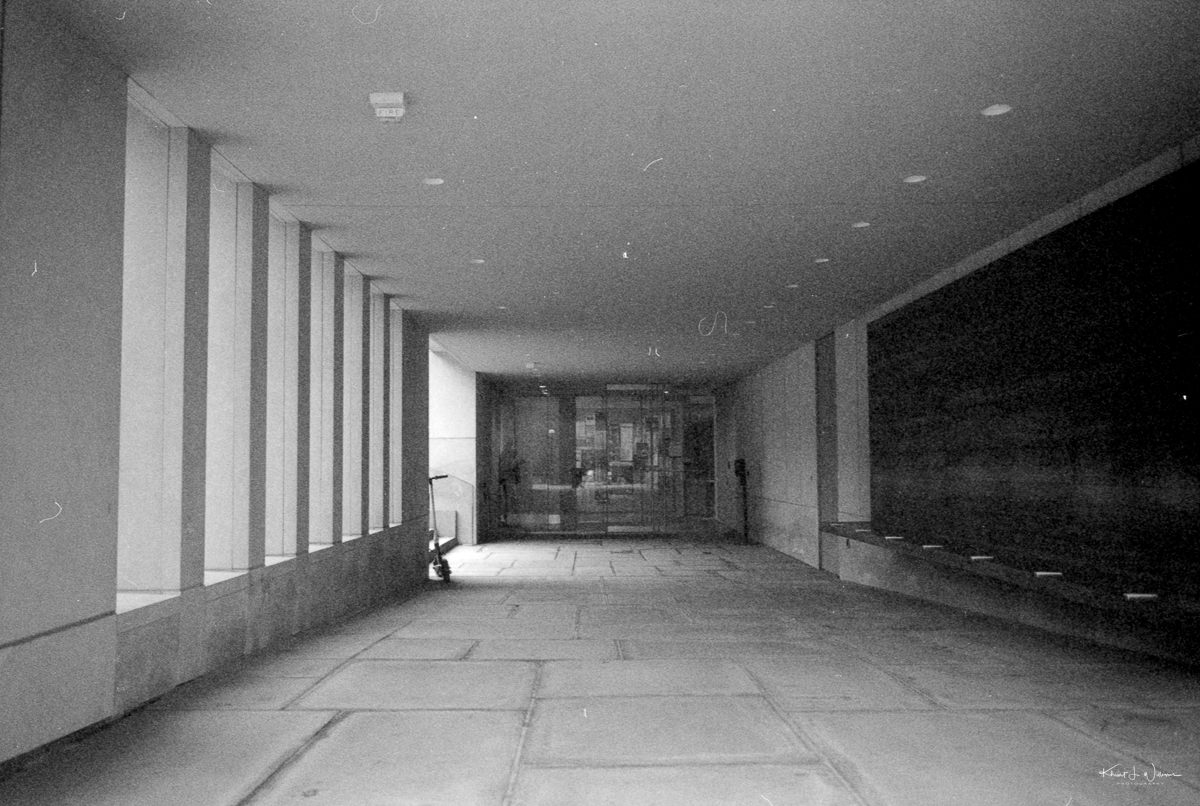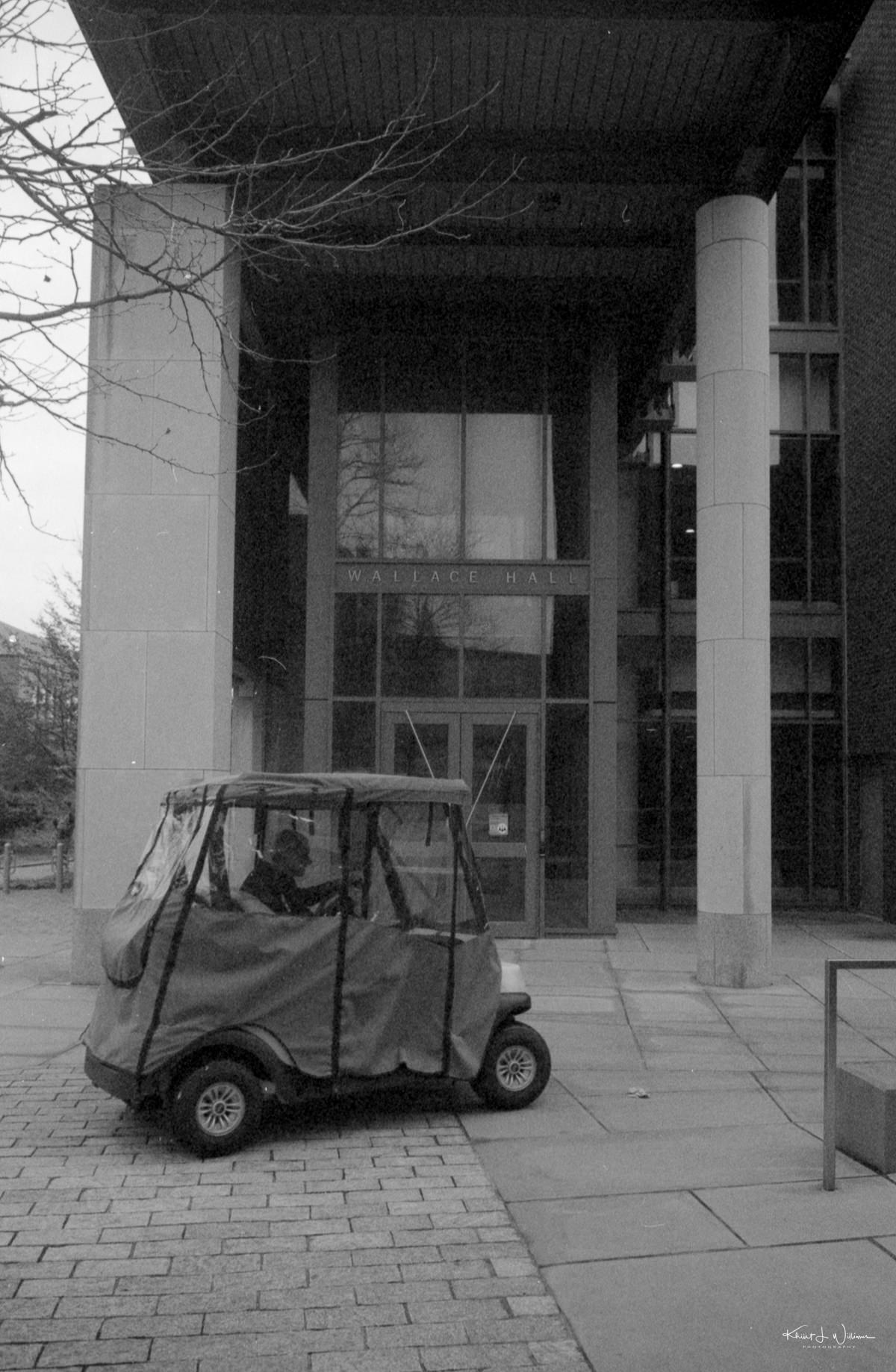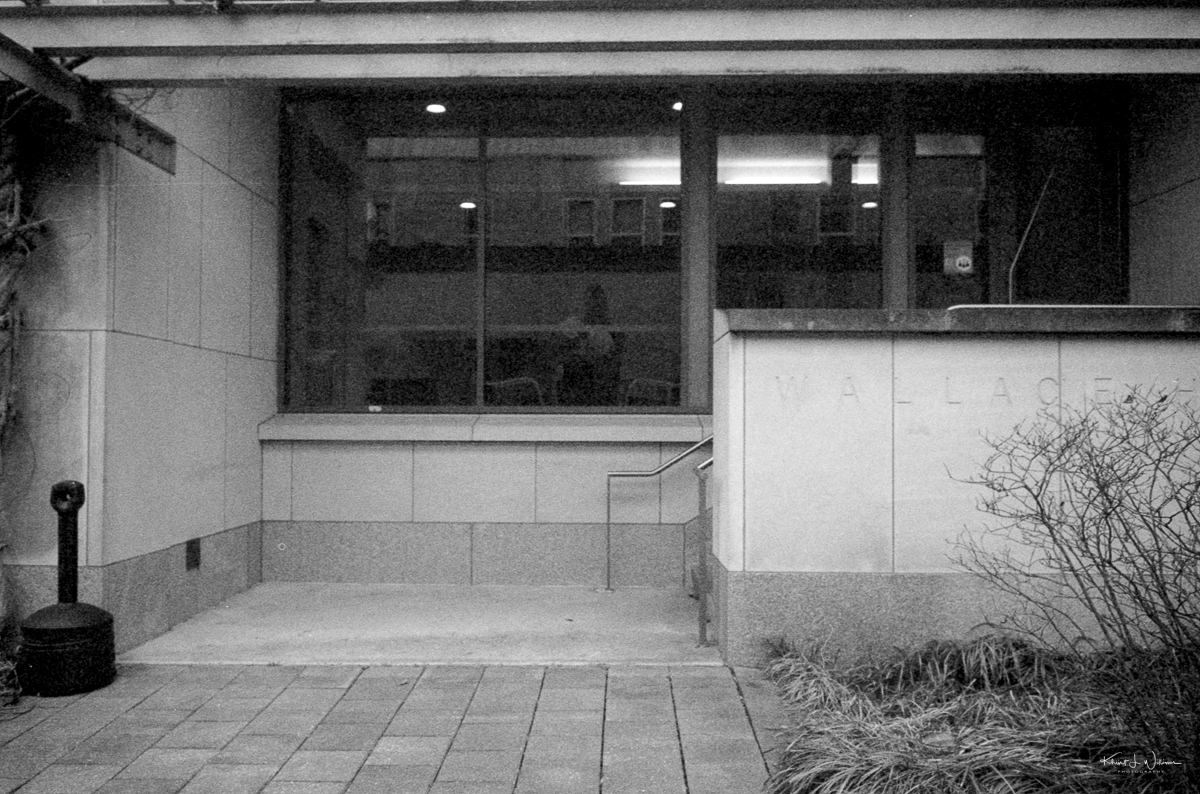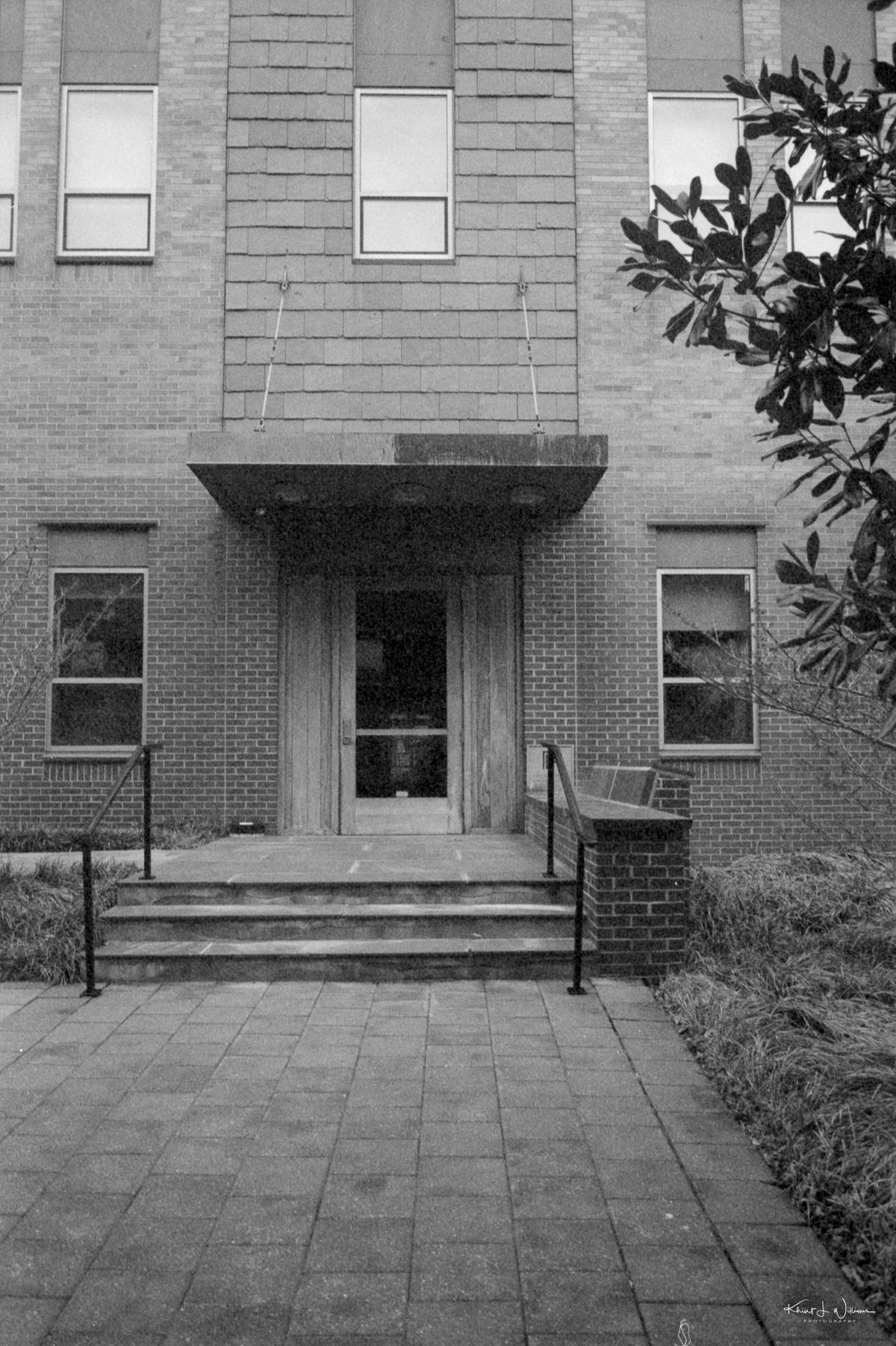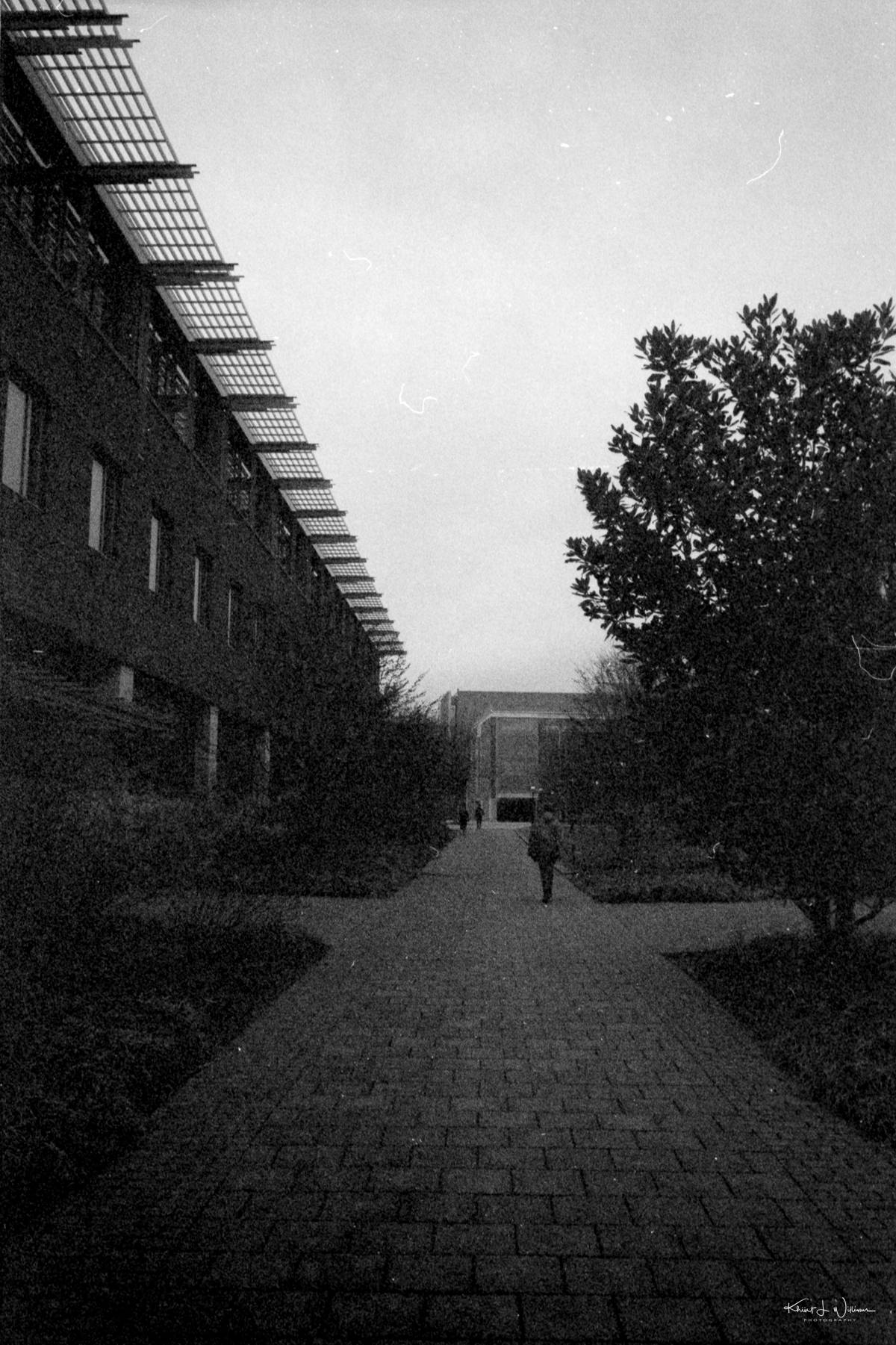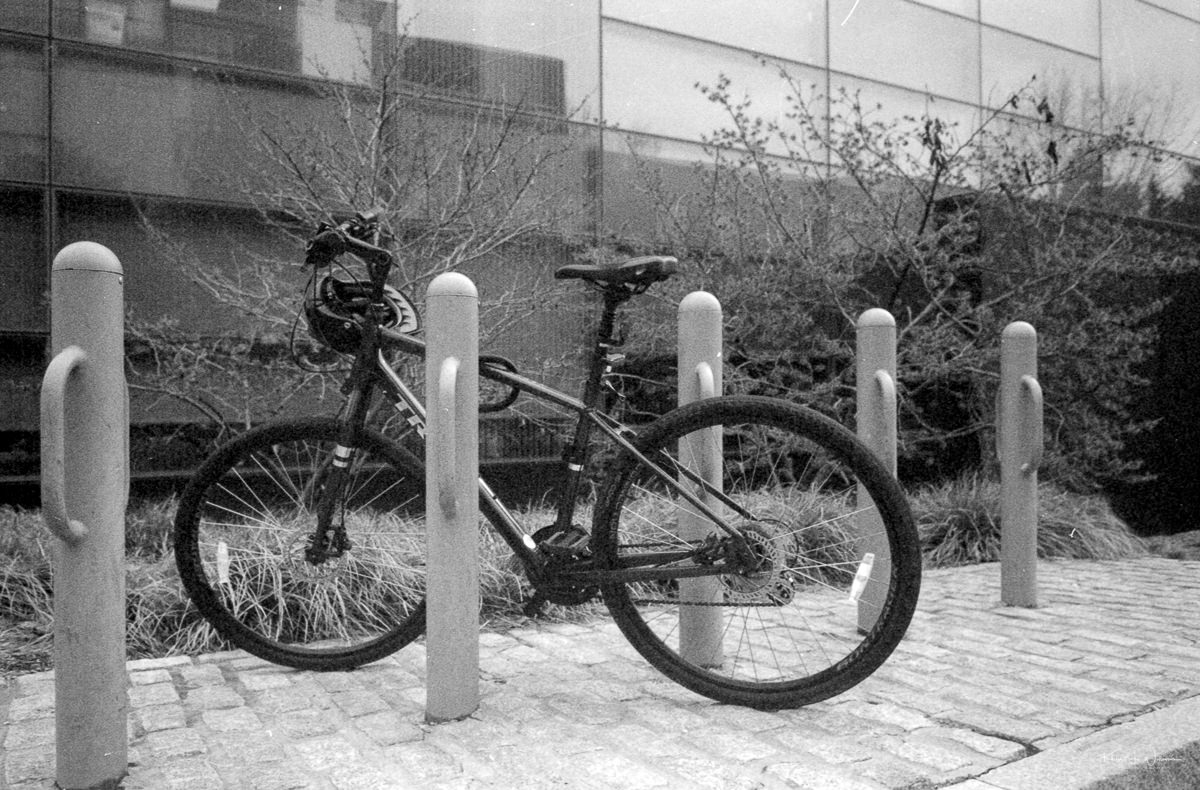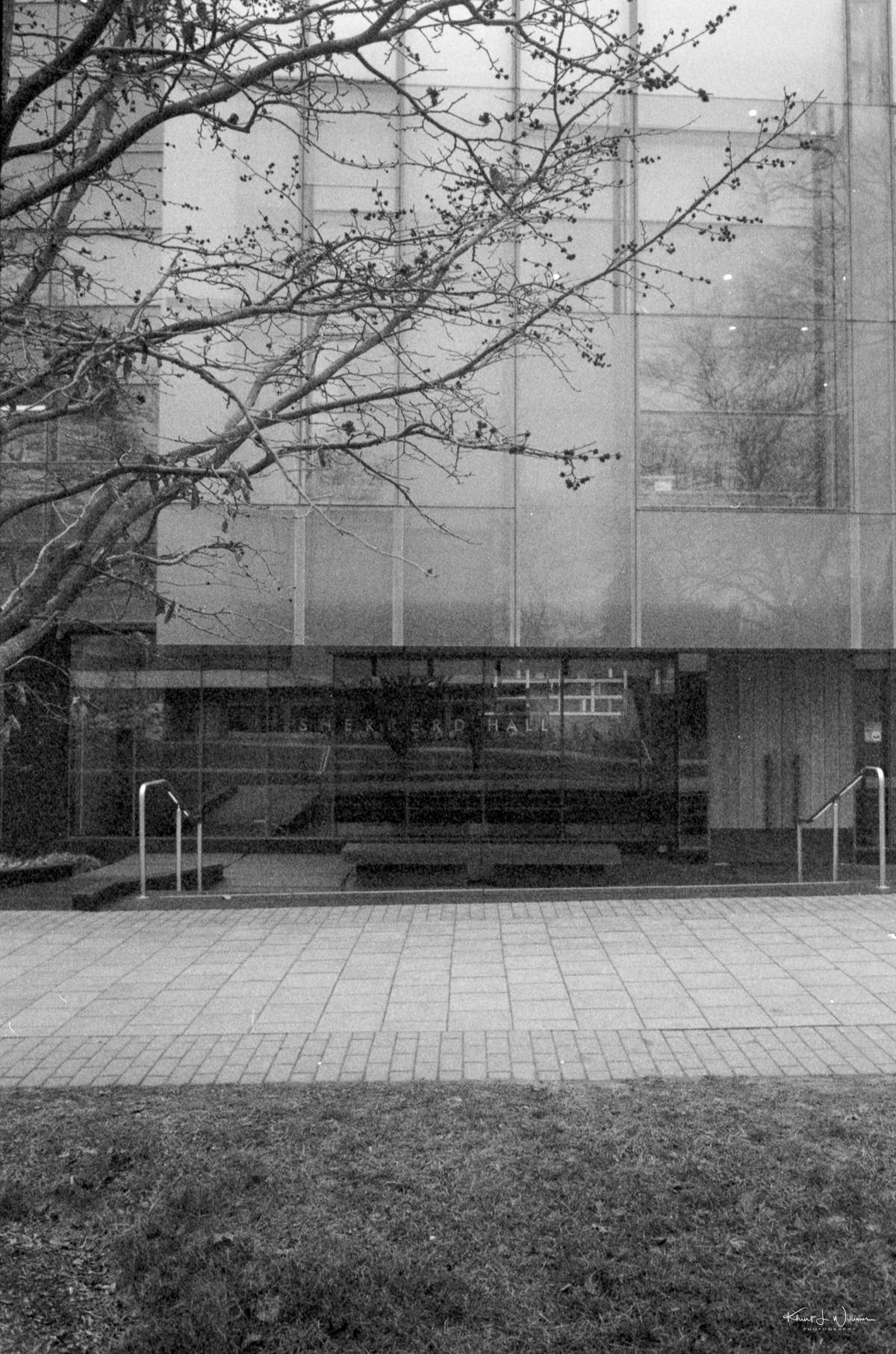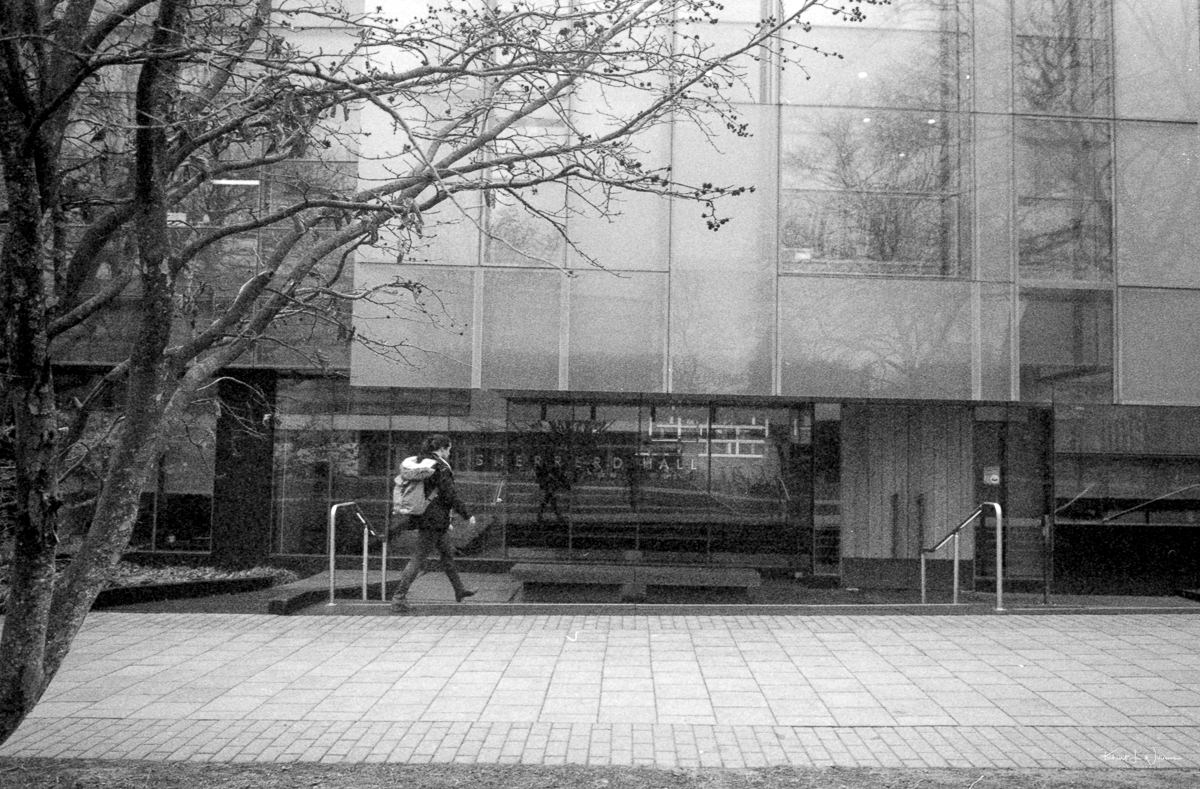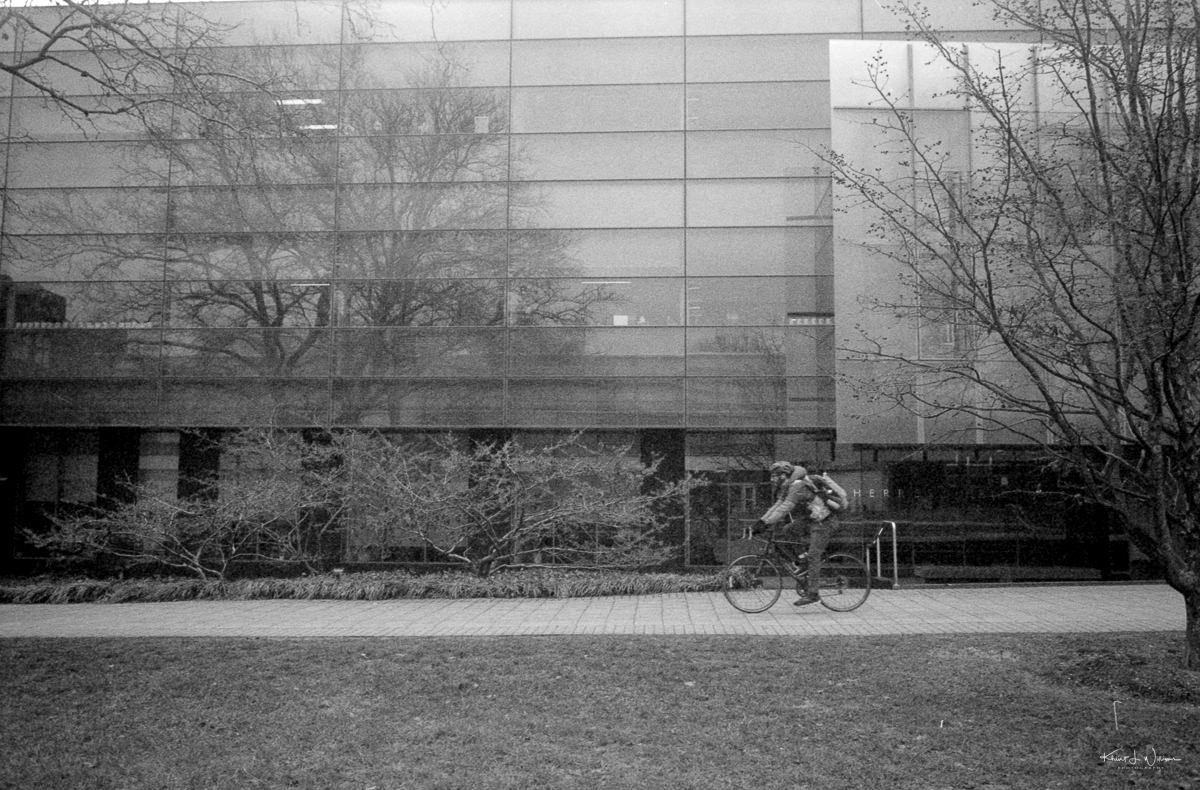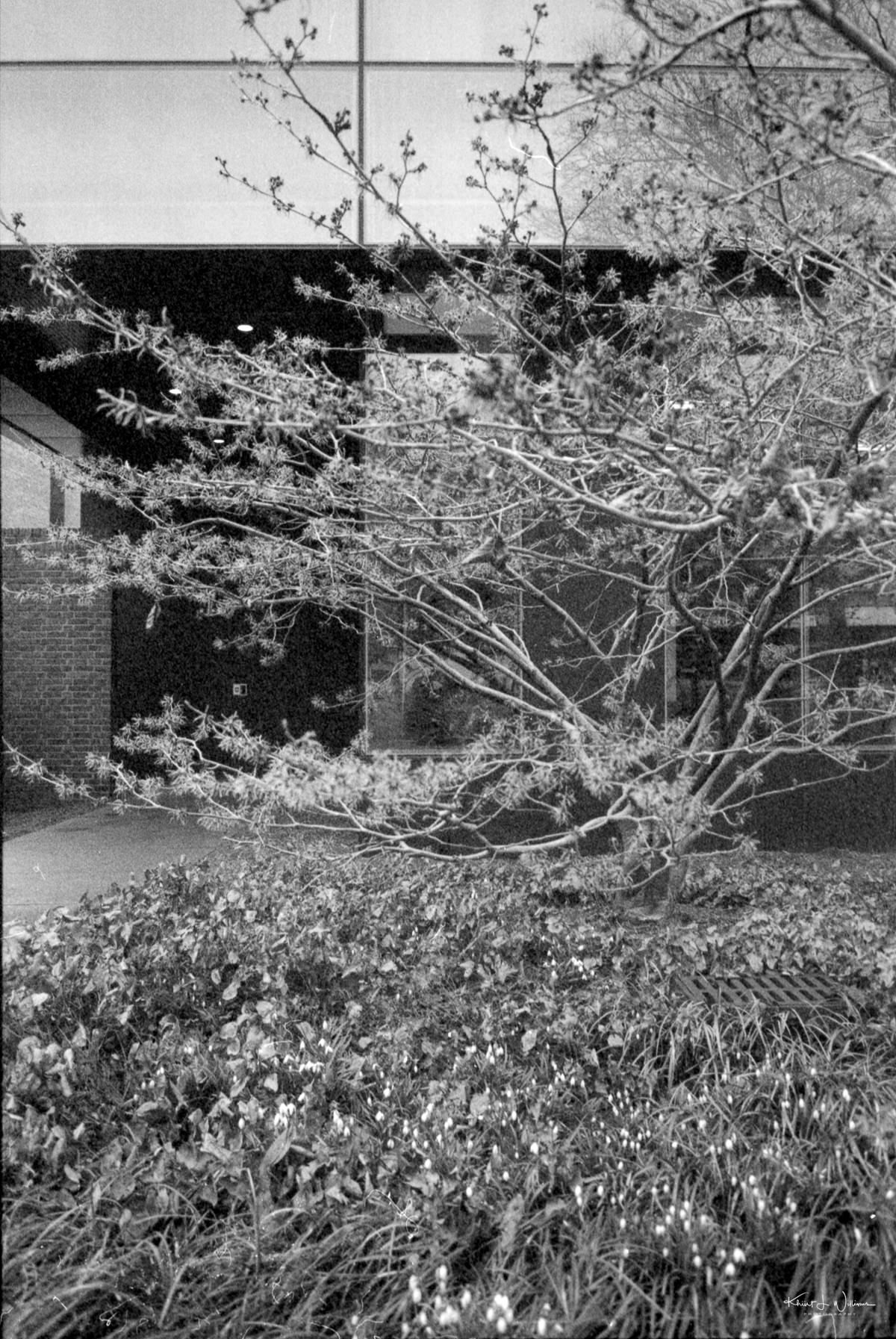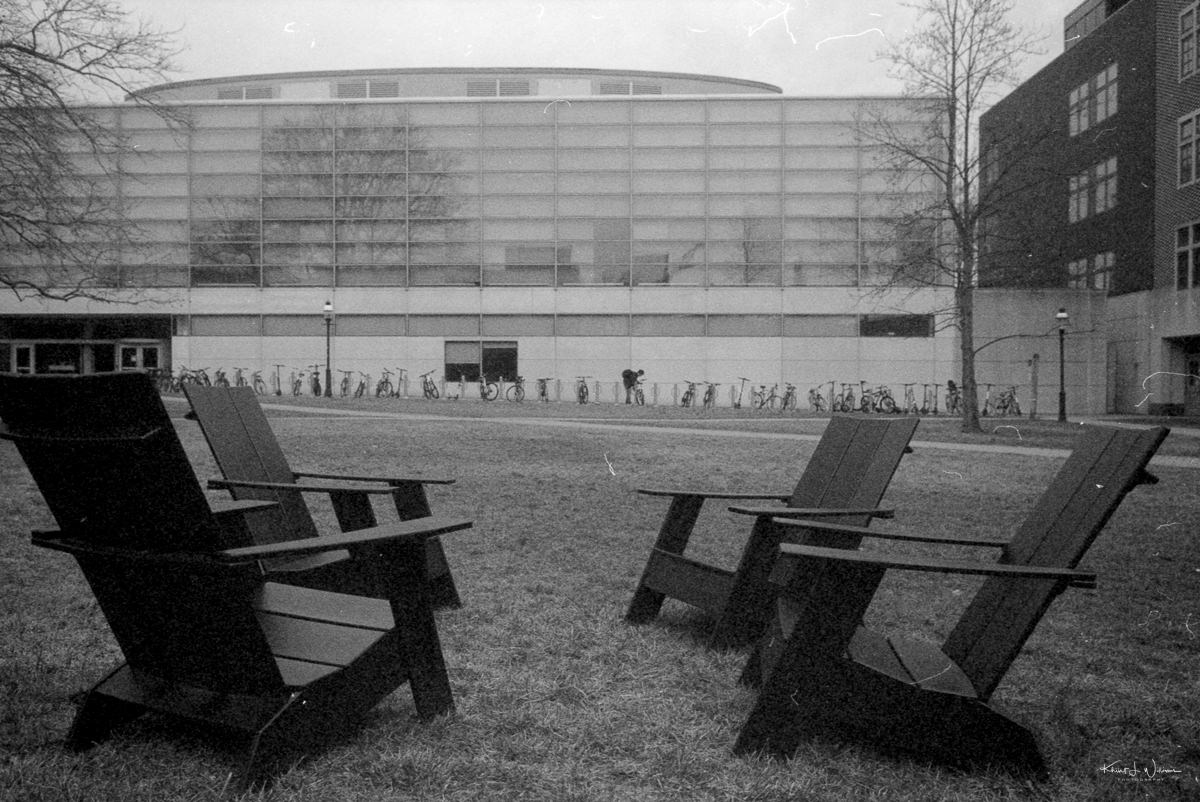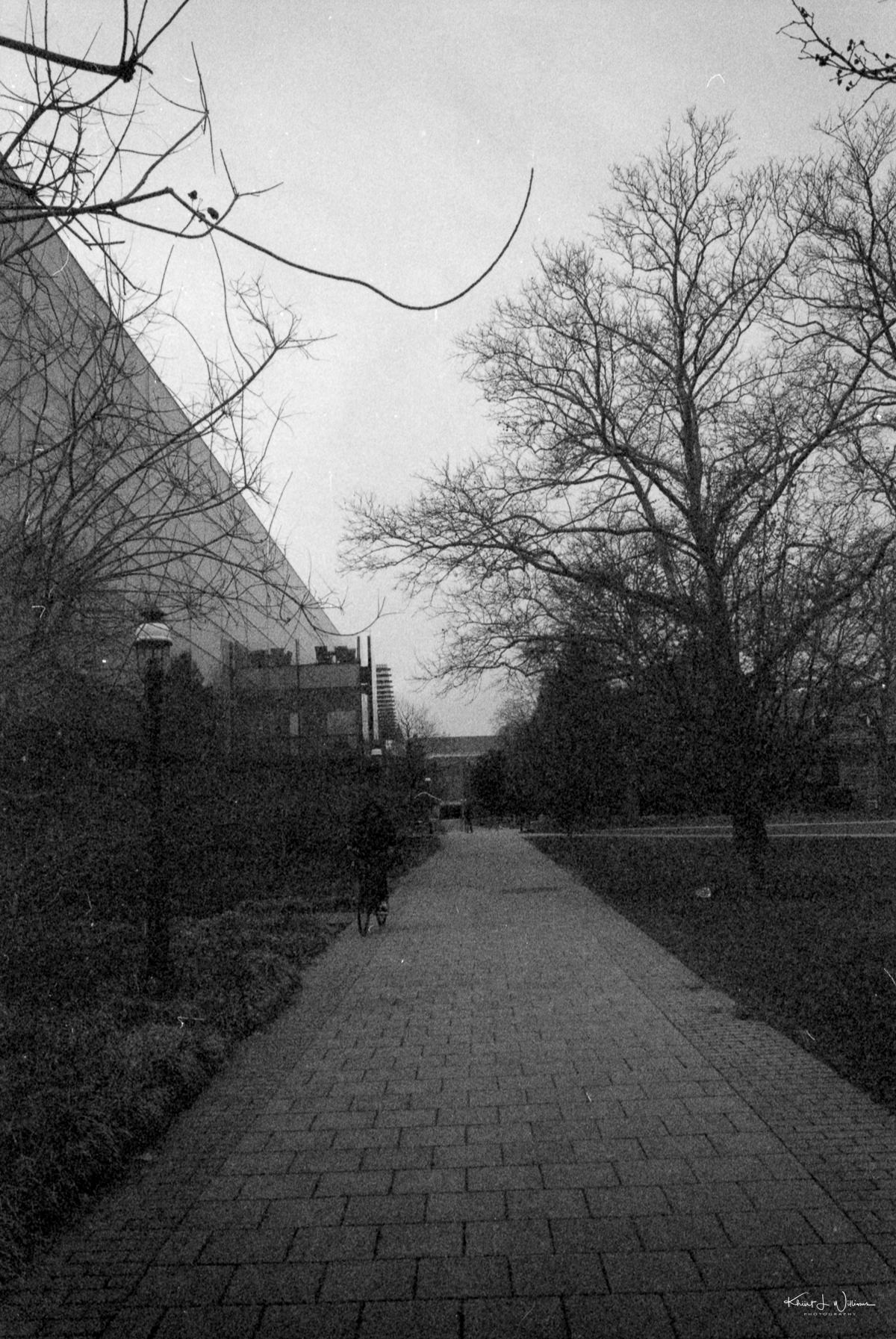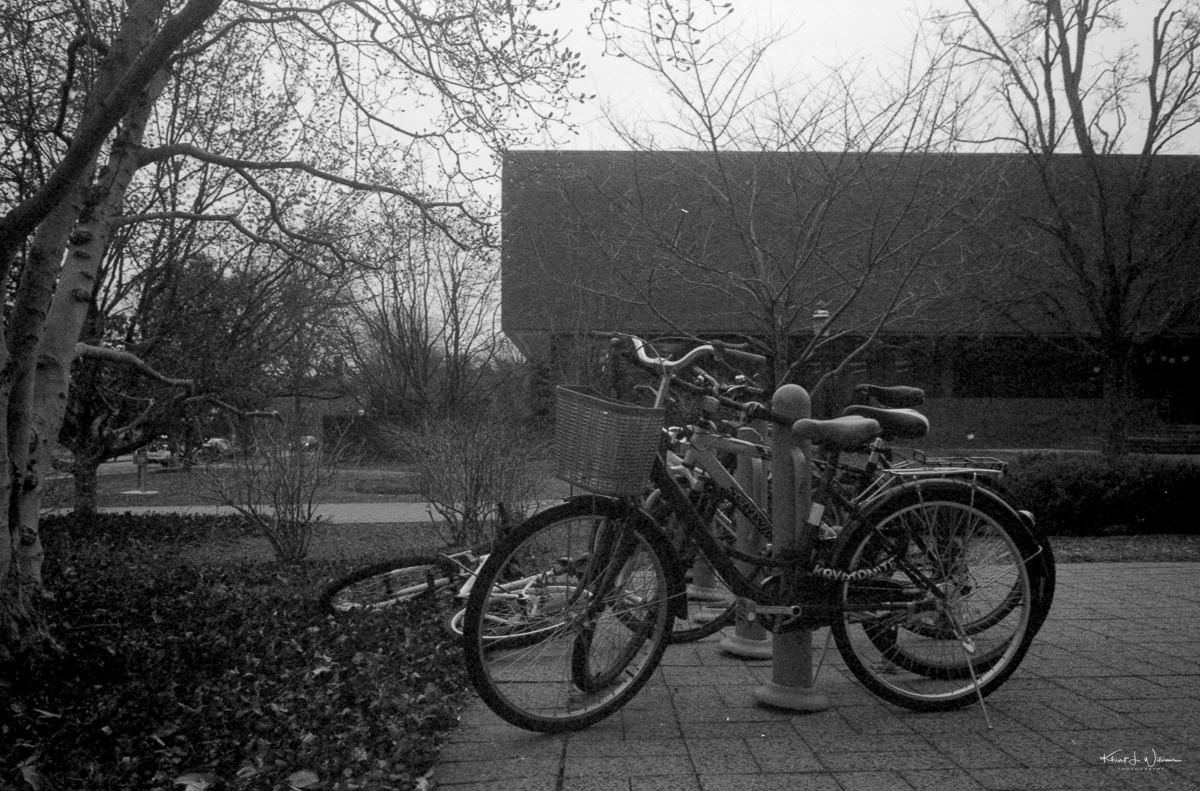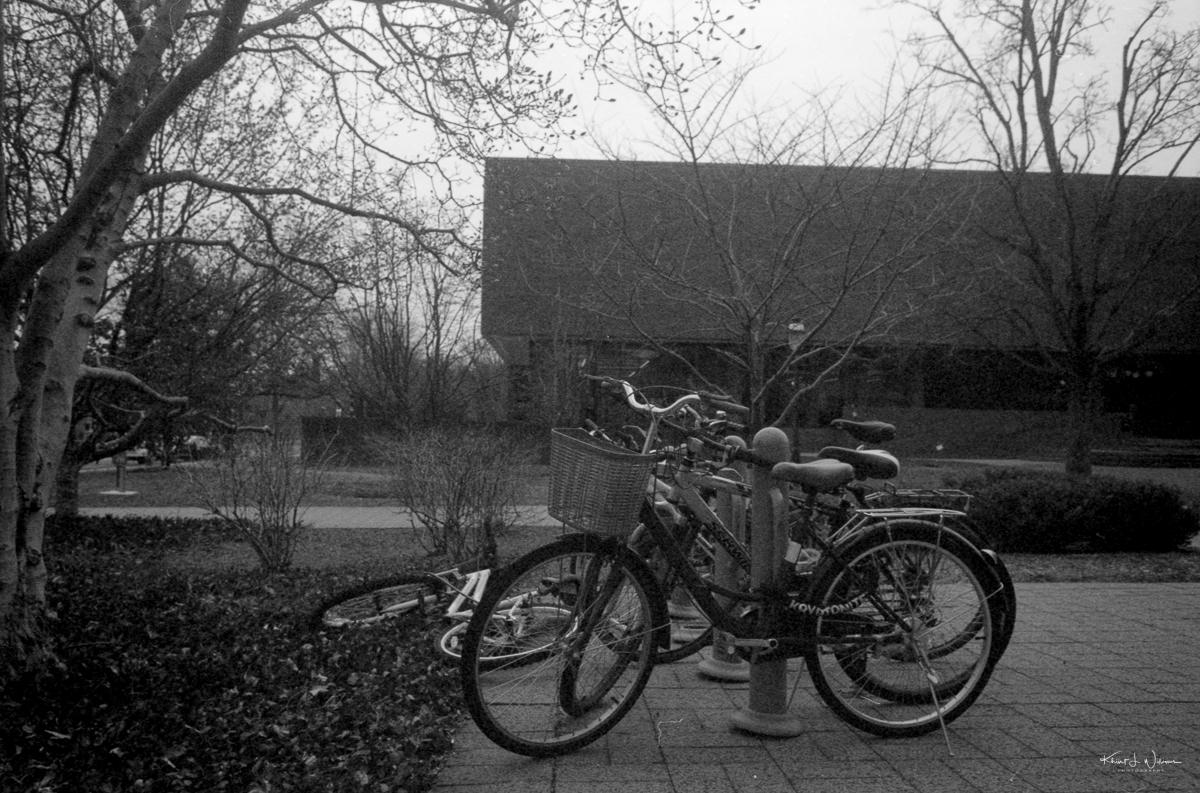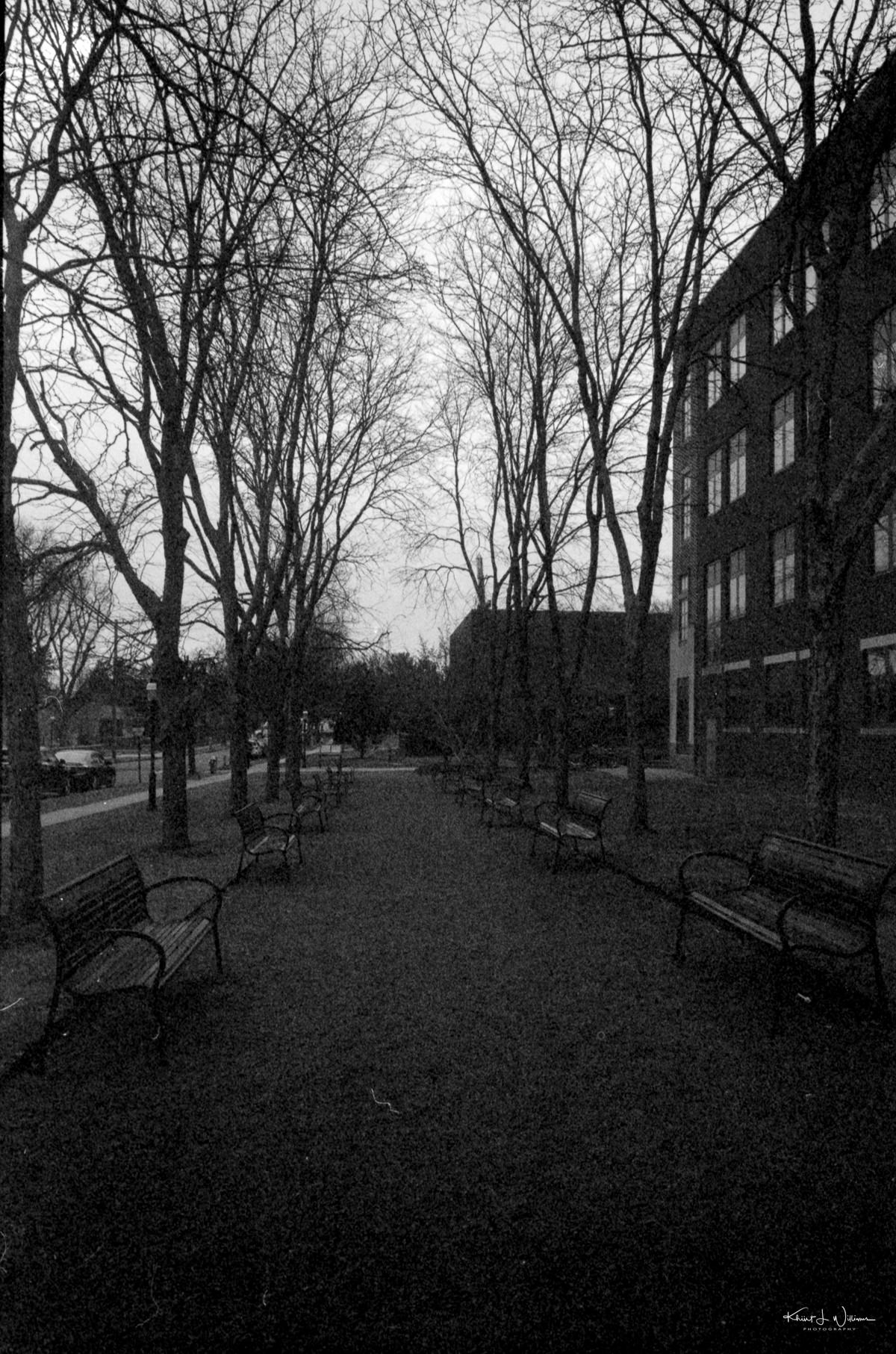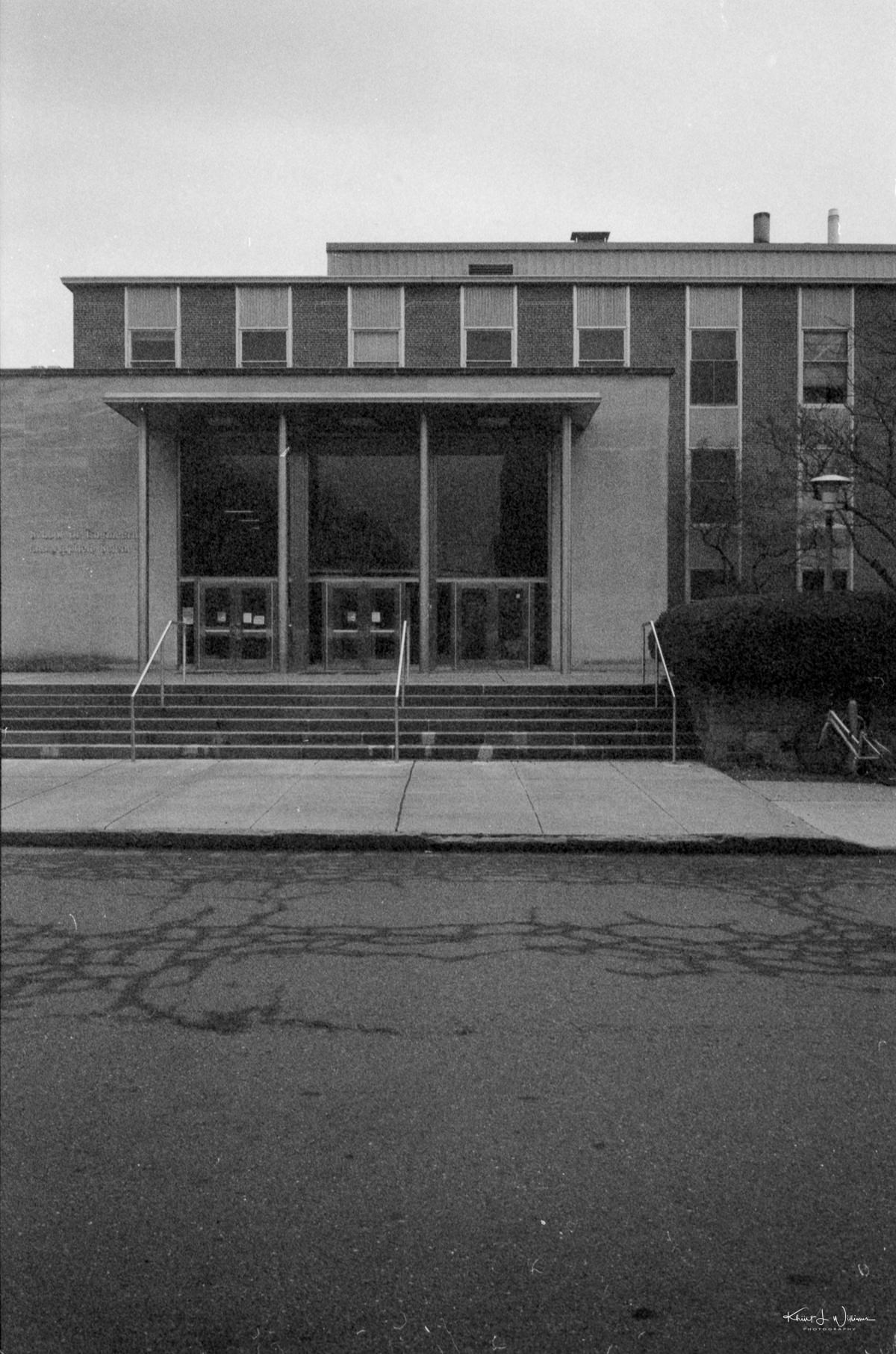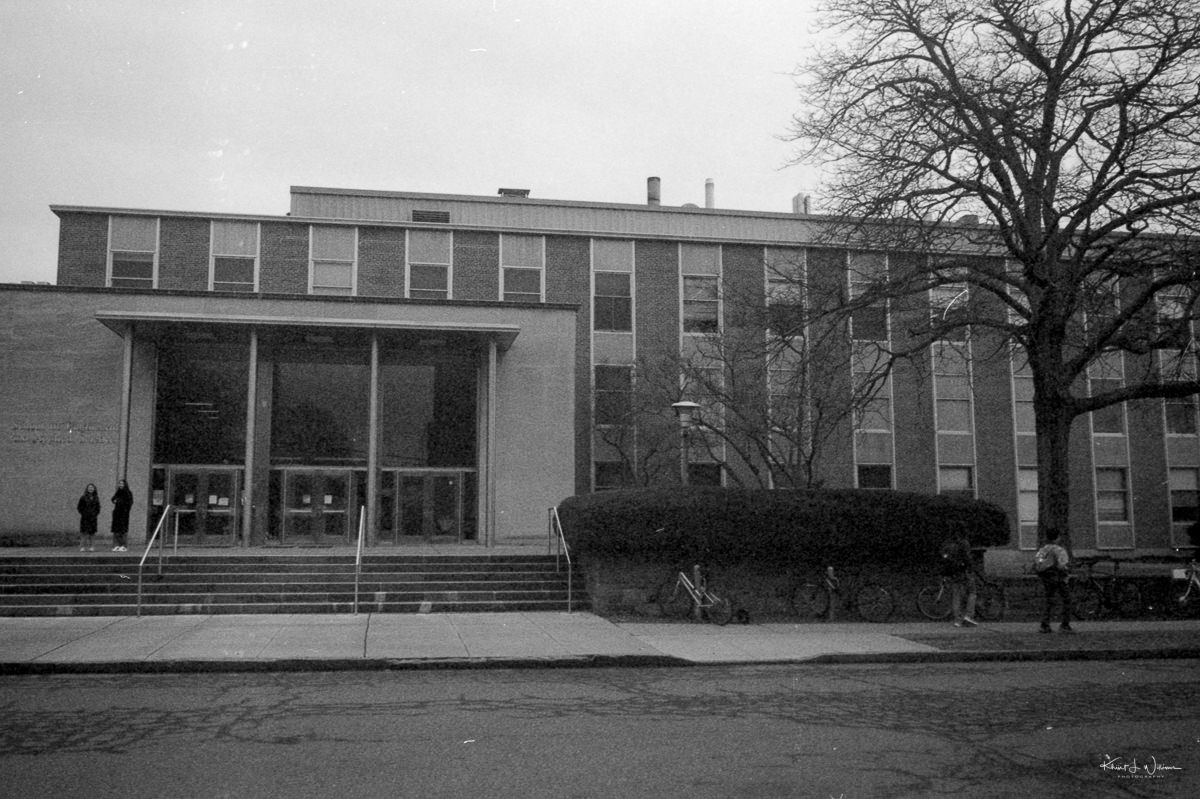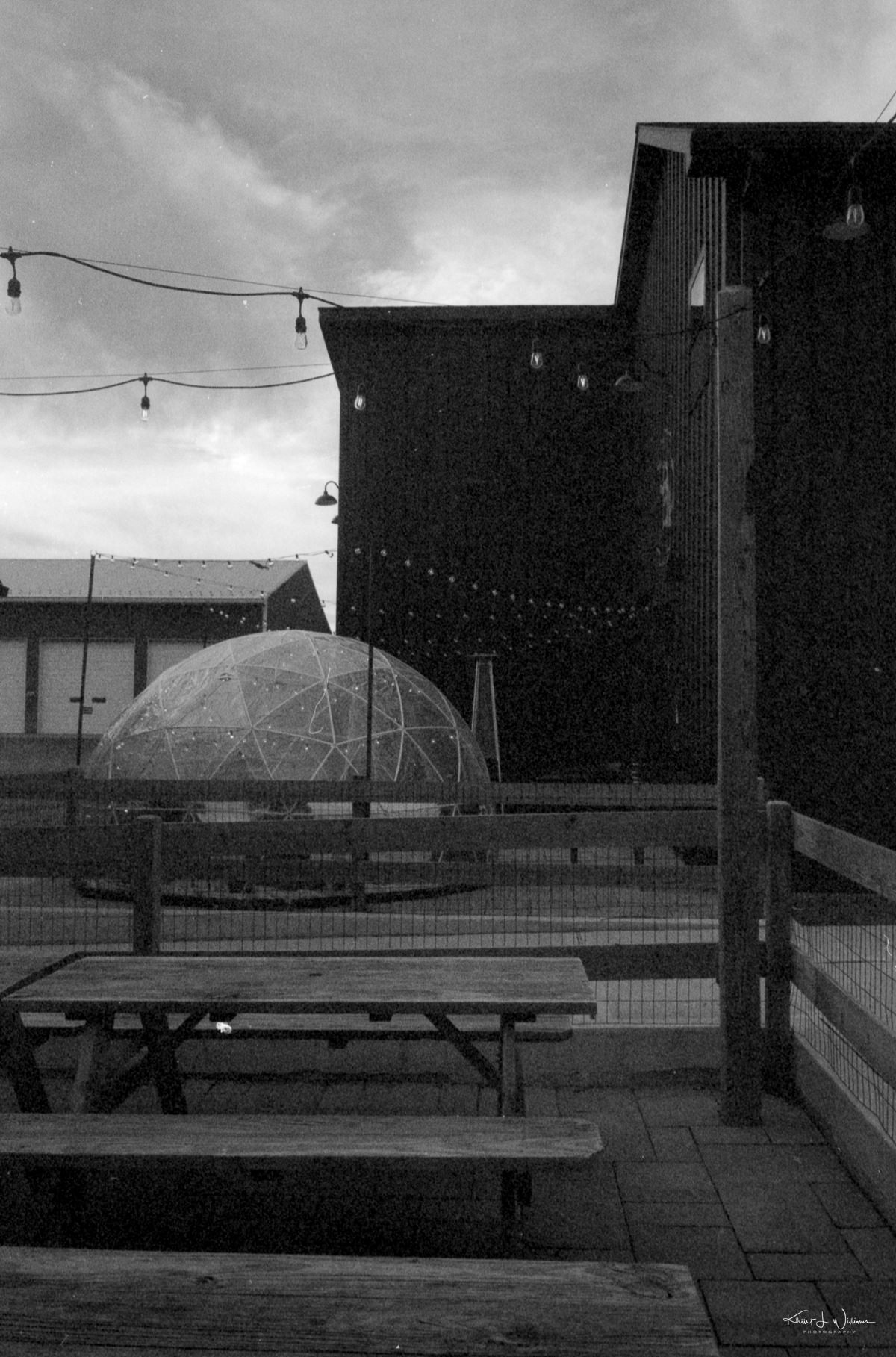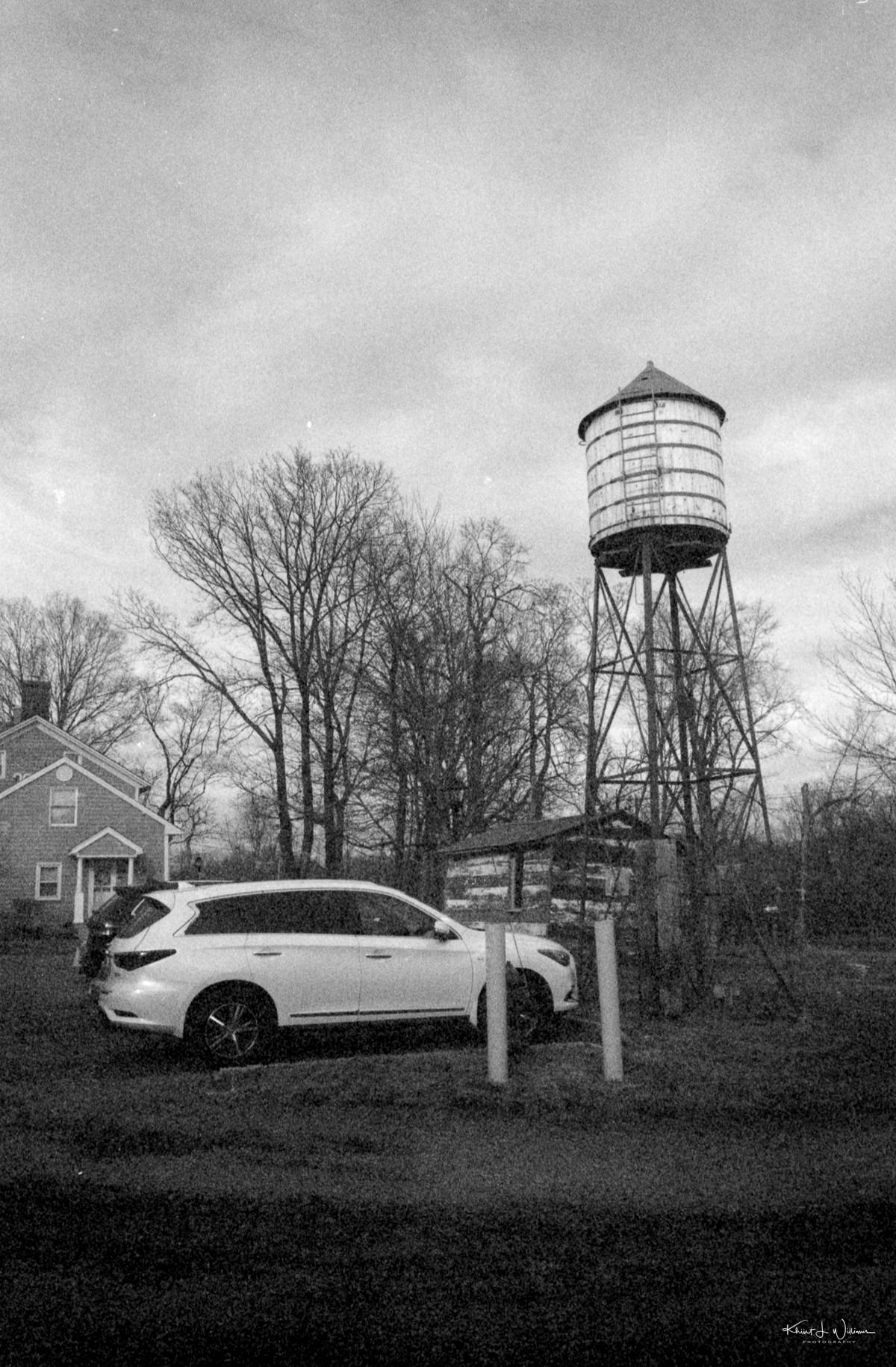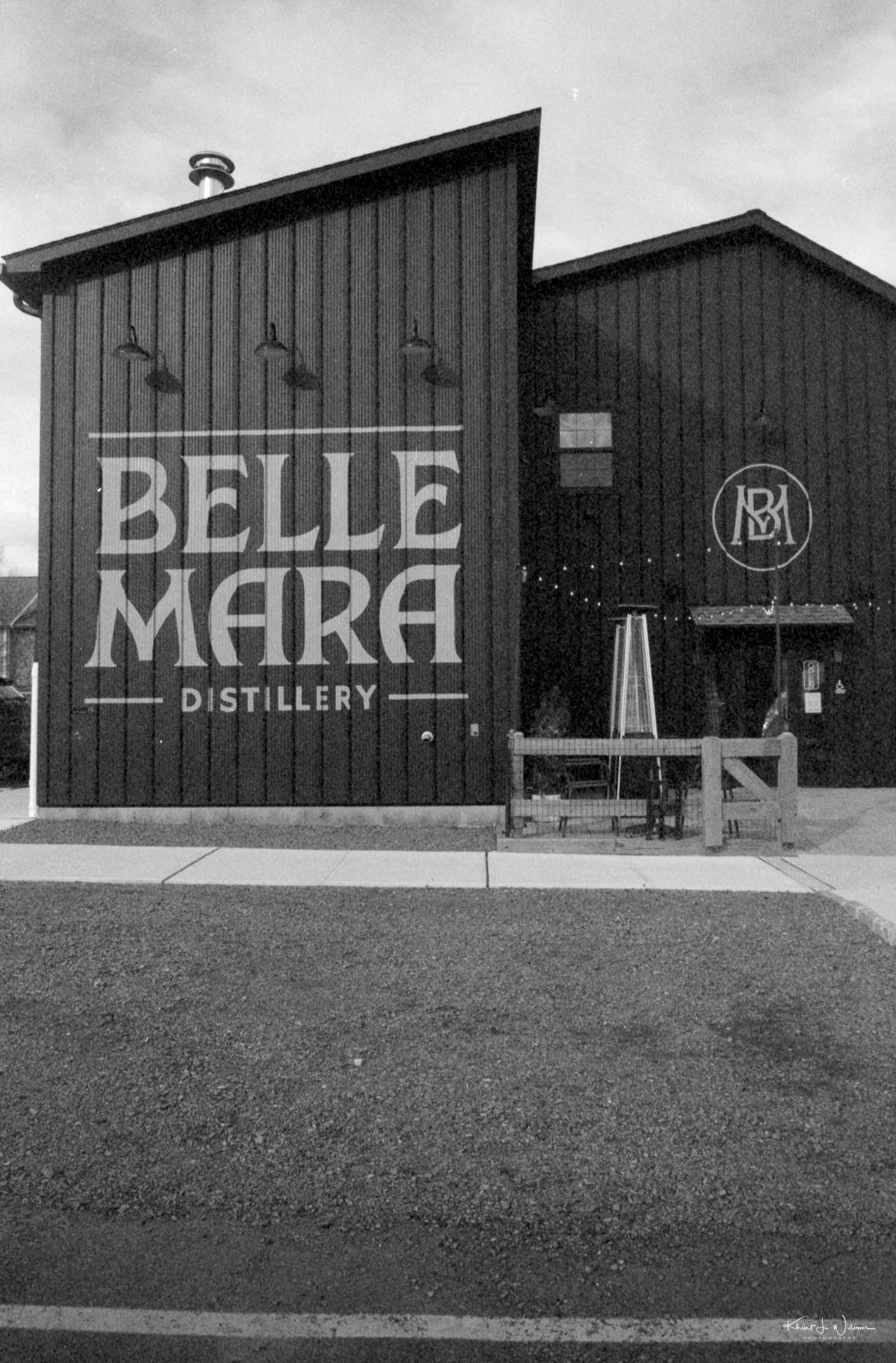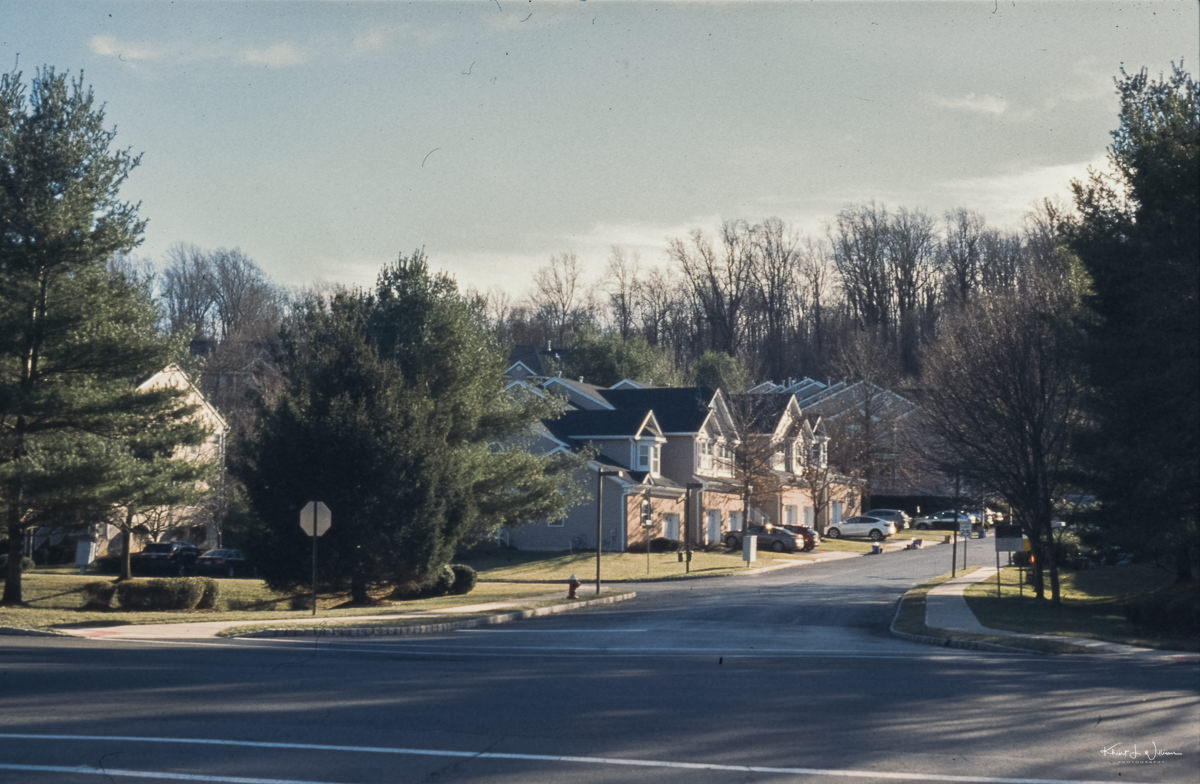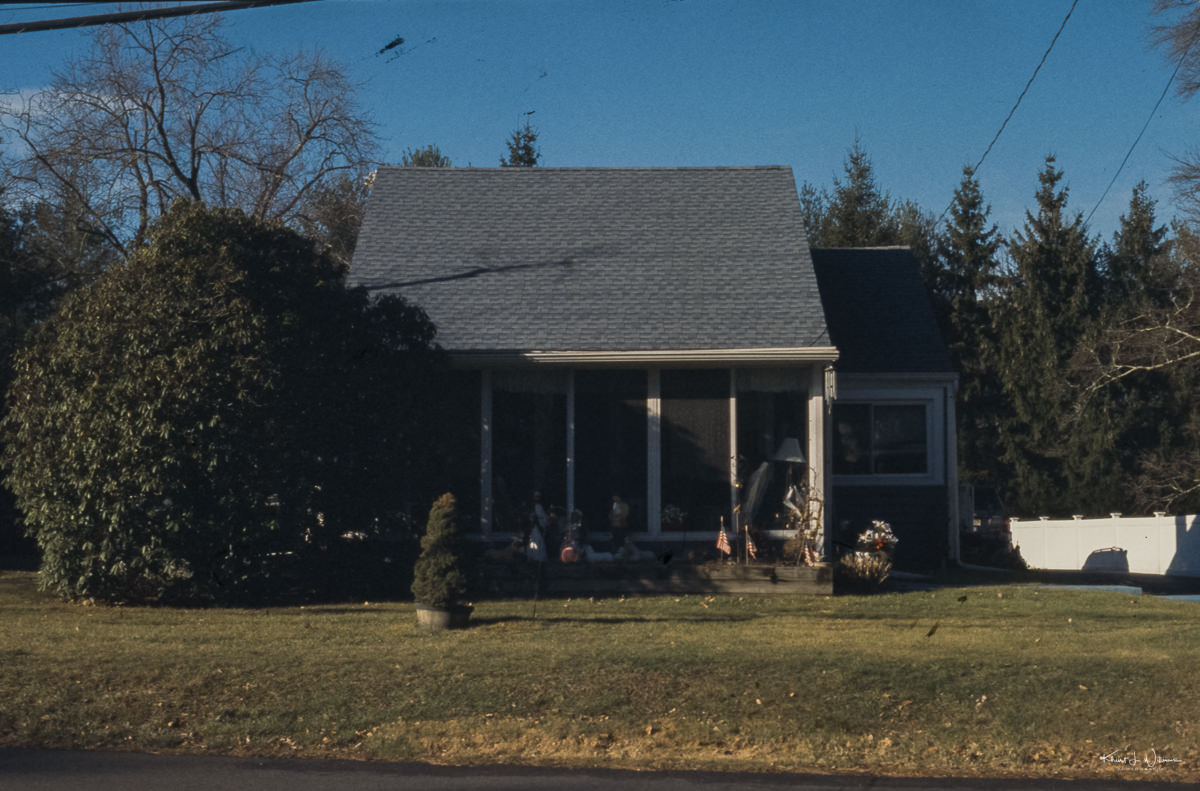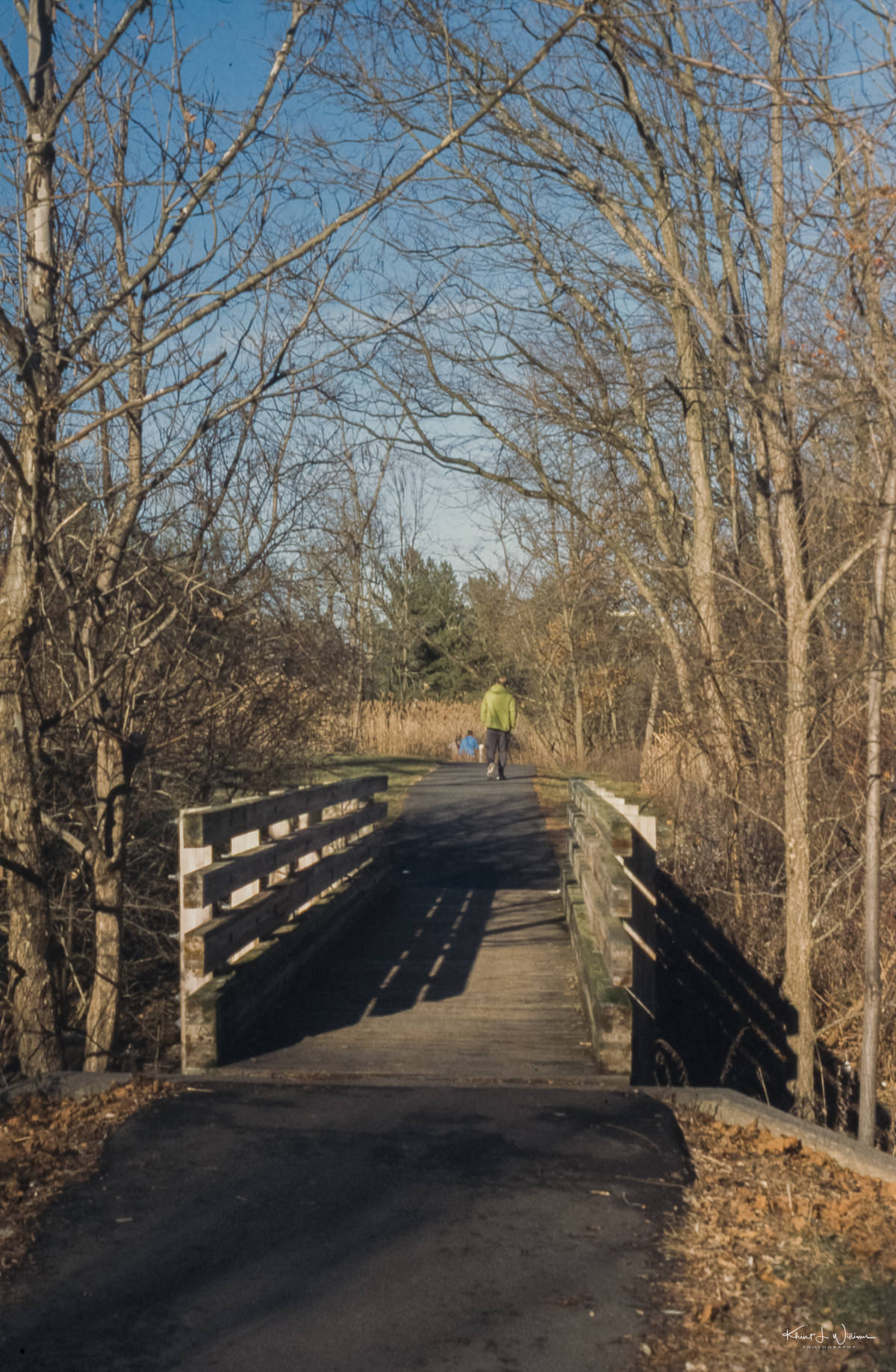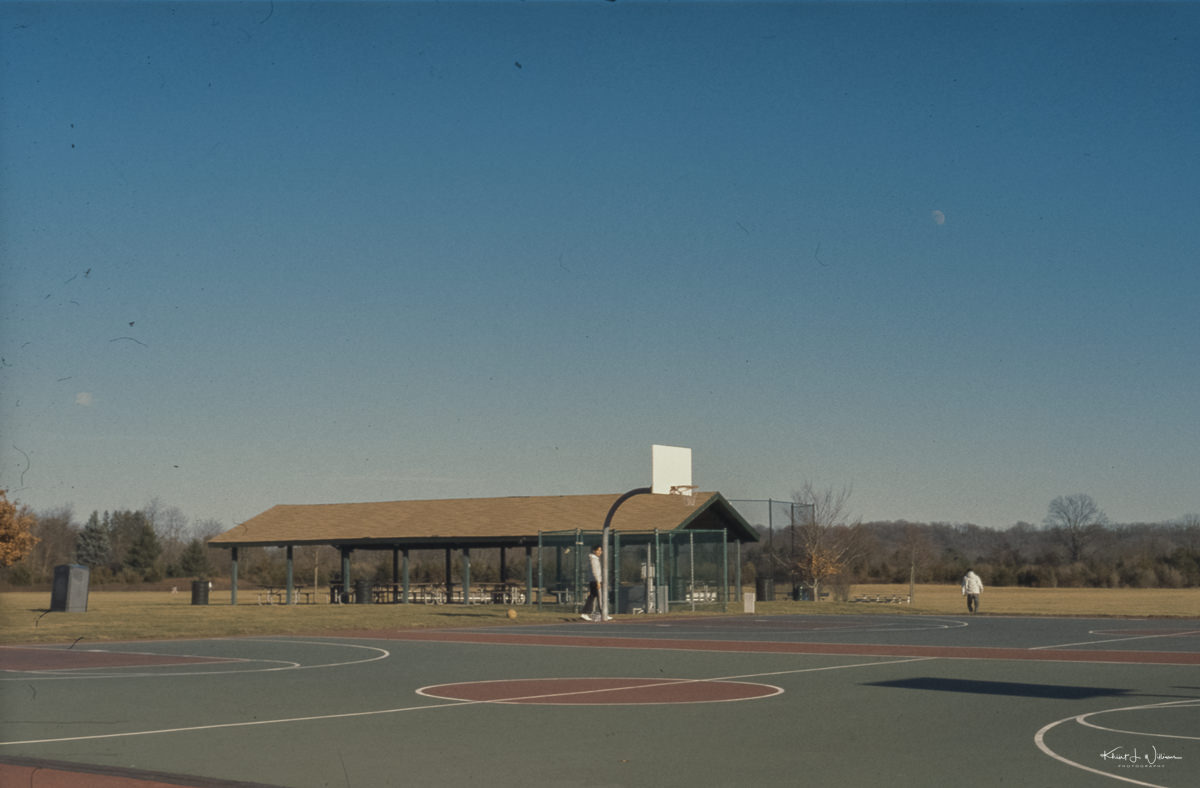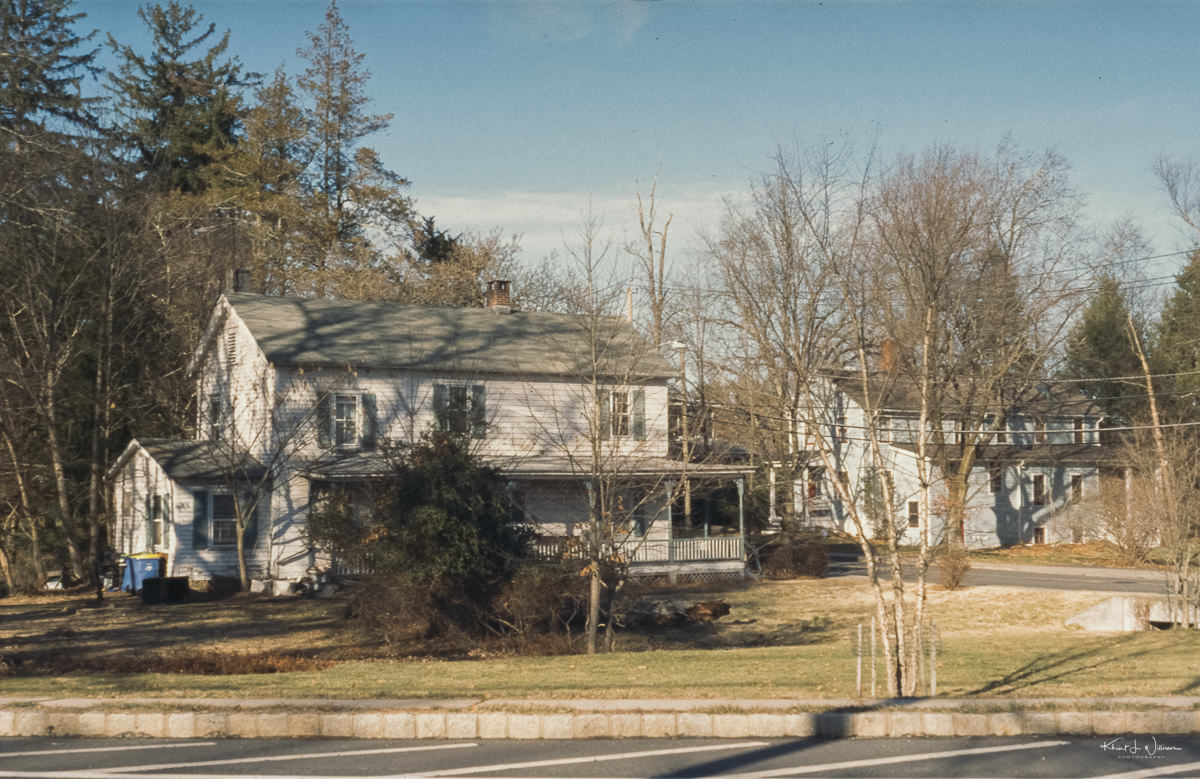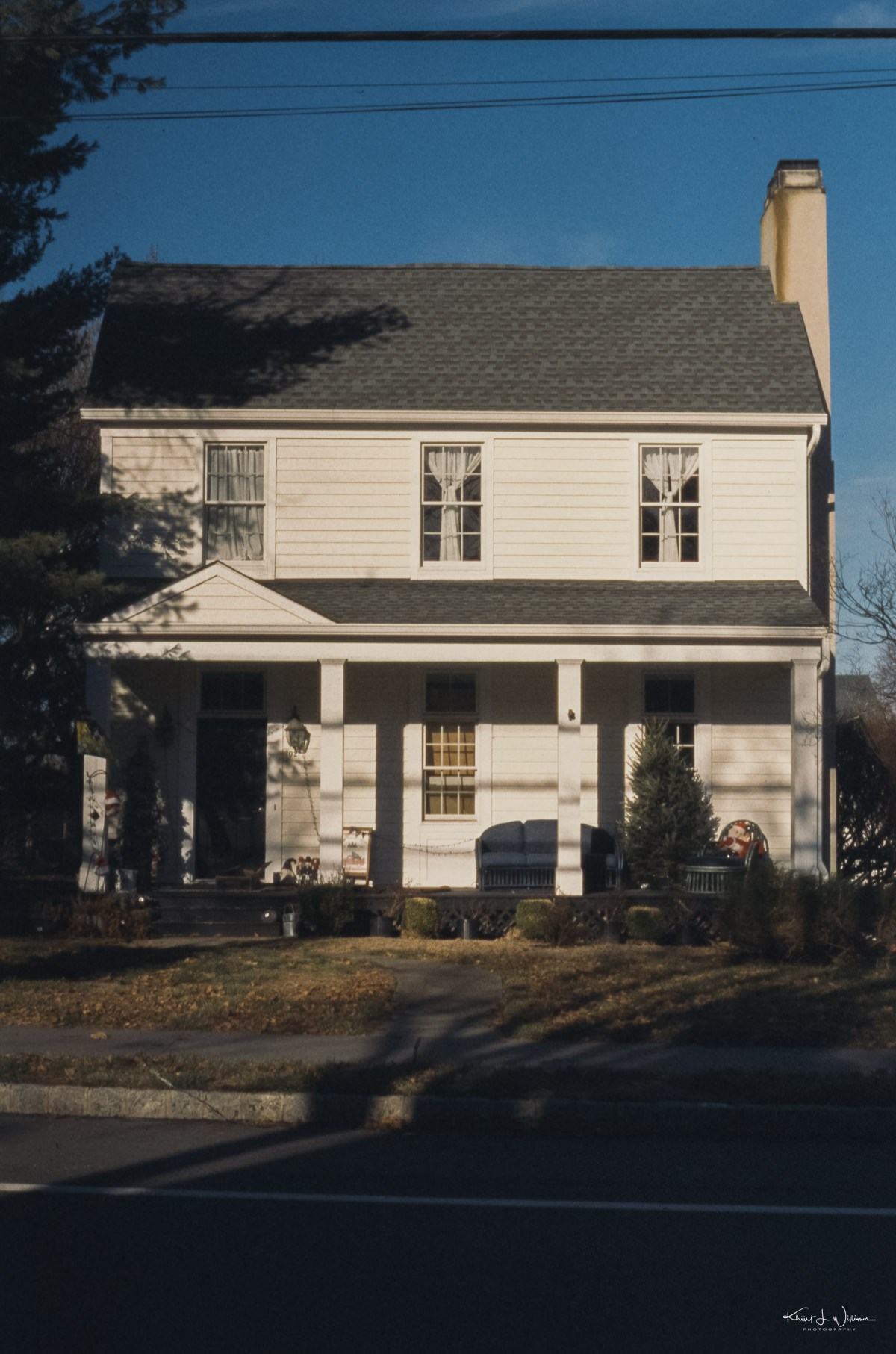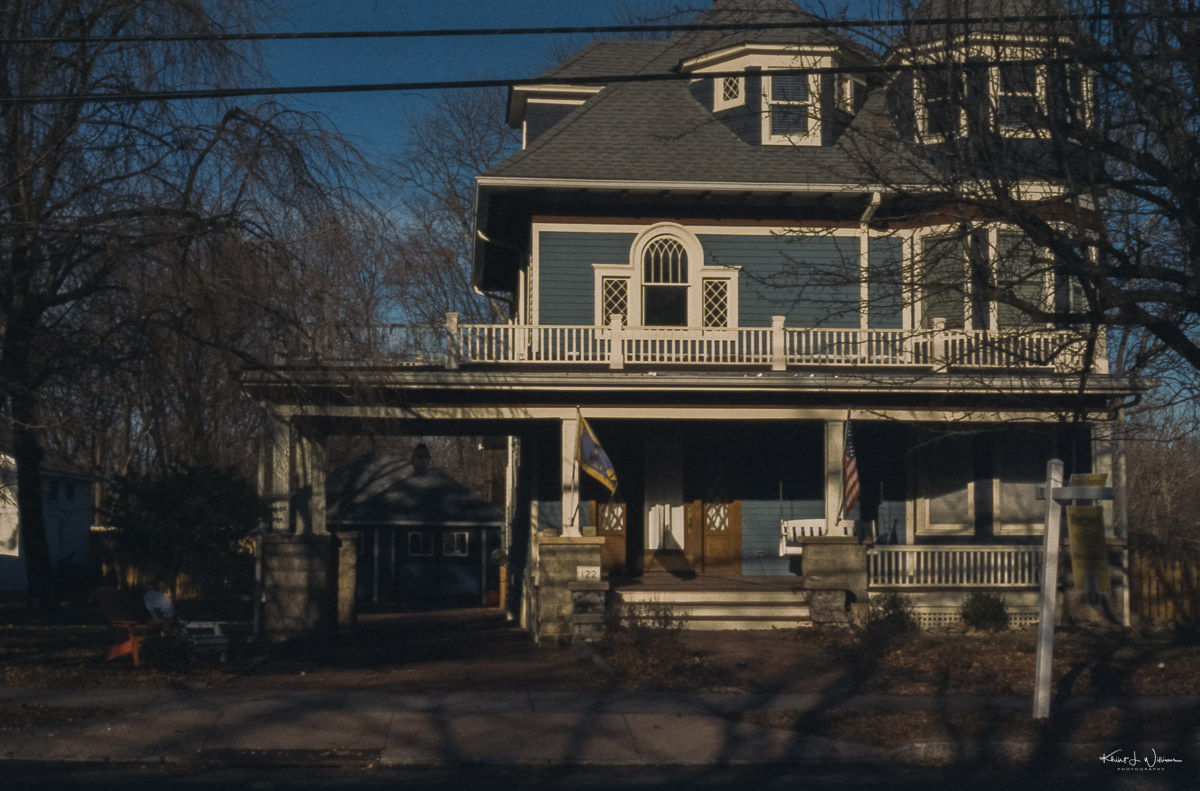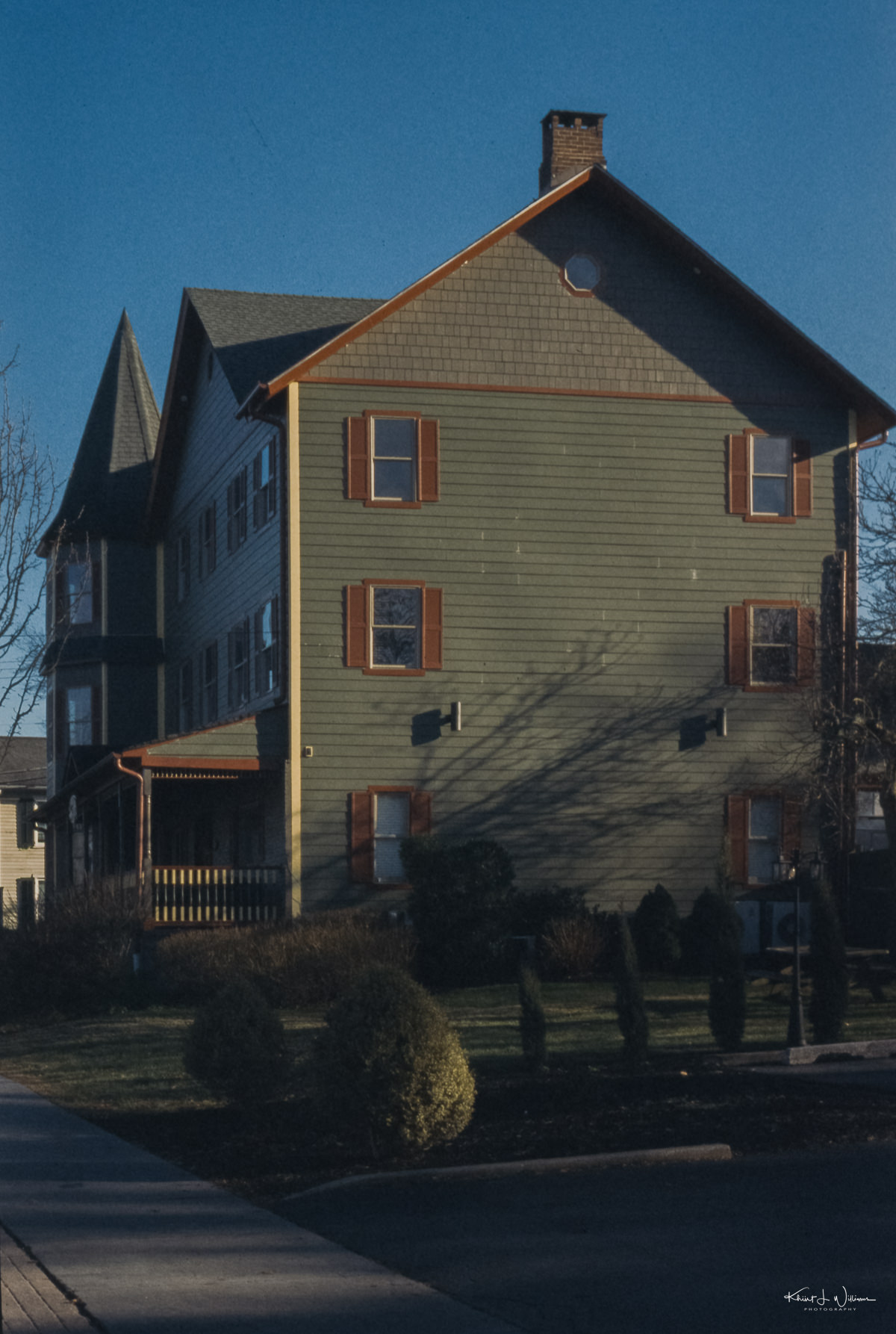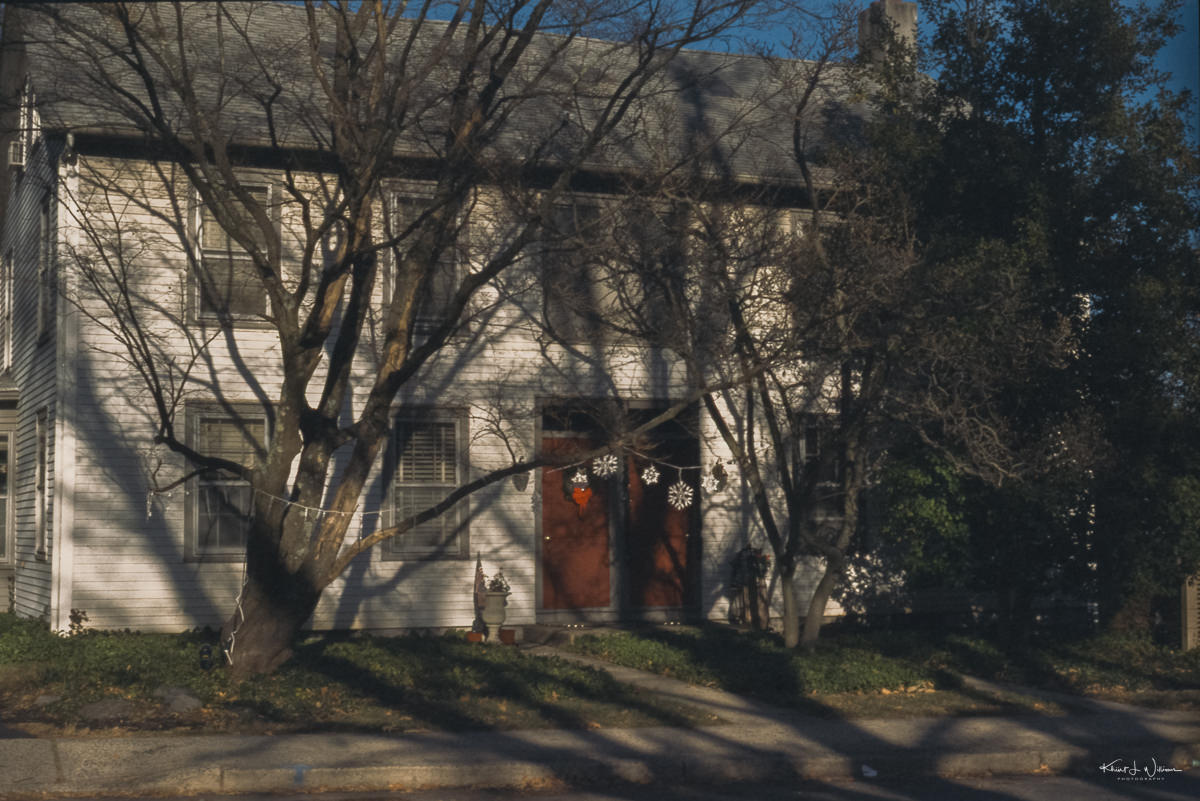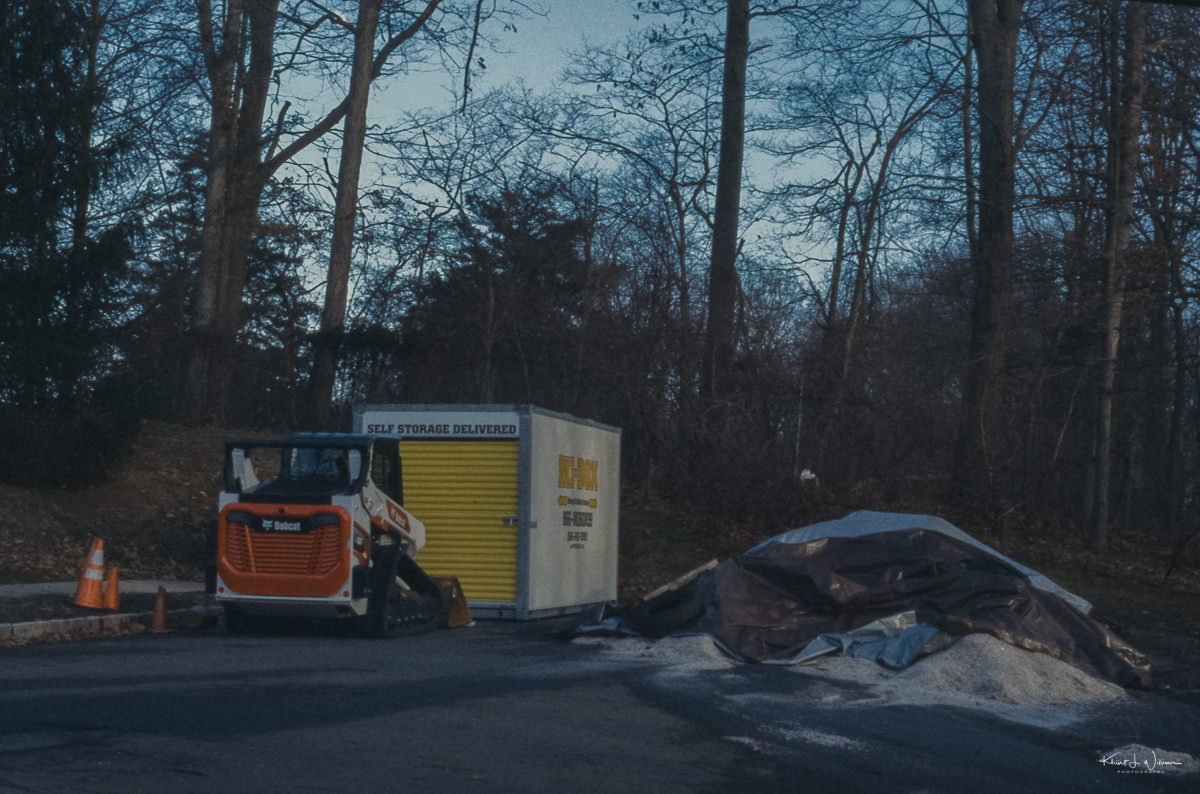I purchased my first 35mm film camera, a Pentax P3, in 1987 for a college photography course. However, after buying my first digital camera in 2000, I stopped using the Pentax P3. It wasn't until the summer of 2019 that I picked it up again.
I prefer aperture priority, and I wanted to try out some unusual film stocks that don’t have DX coded. The Pentax P3 has Shutter Priority and Program Autoexposure modes only. The Pentax P3 does not have manual ISO settings. The DX coding on the film canister determines the ISO setting on the P3. These are the main reasons I purchased the Minolta X-700. At the time of [purchase in 2020], it had been nearly twenty-five years since I used a manual focus 35mm film camera.
I bought the Minolta X-700 in 2020 because the Pentax P3 lacked certain features I preferred, such as aperture priority and manual ISO settings. The Minolta X-700 offered these features and more. It was the first manual focus 35mm film camera I had used in nearly twenty-five years.
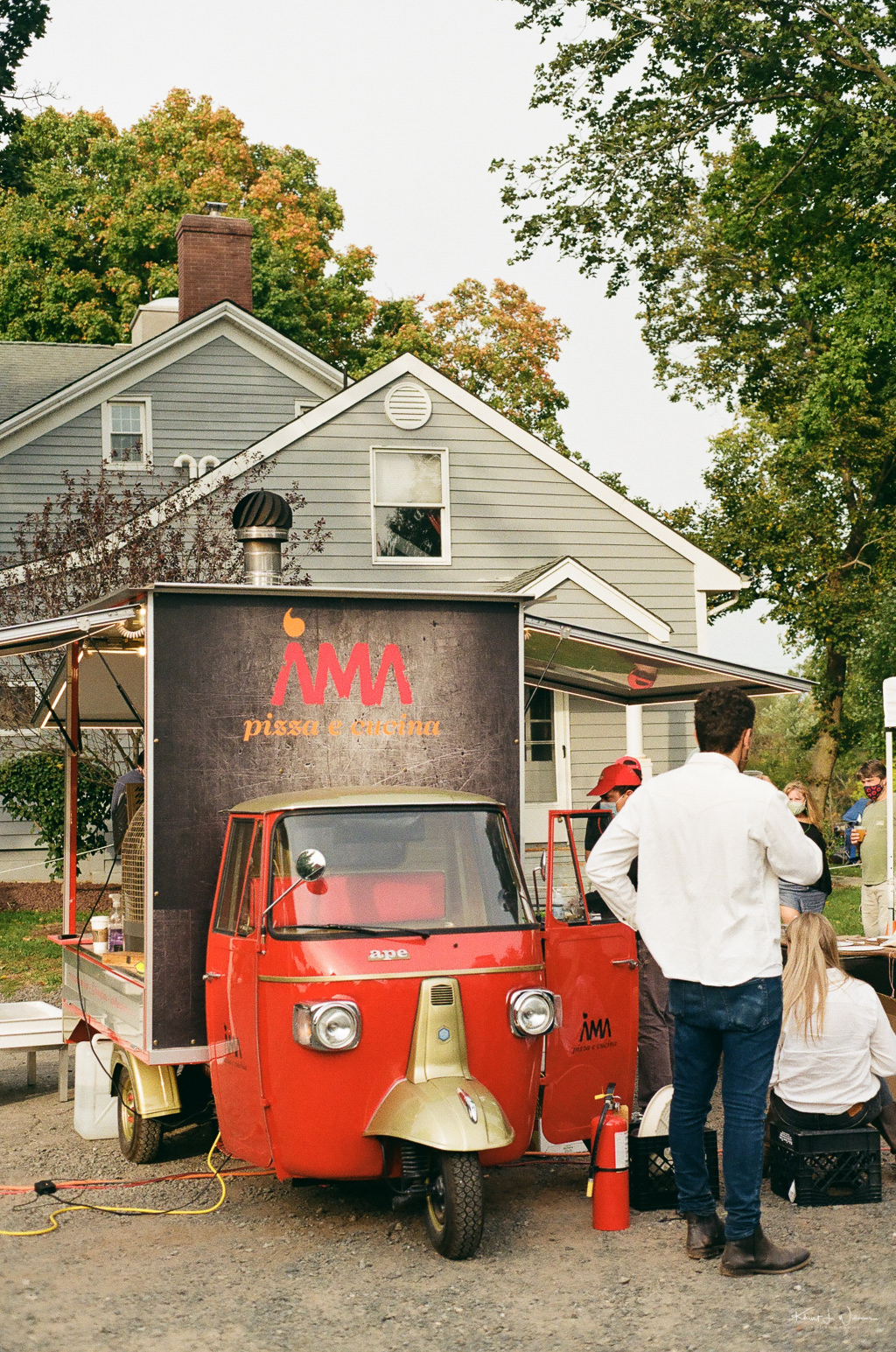
The Minolta X-700 was first manufactured in 1981. It quickly gained popularity and became one of Minolta’s most successful 35mm SLR cameras. The Minolta X-700 is still highly regarded for its advanced features and user-friendly design, making it a favourite among amateur and professional photographers. Its introduction marked a significant milestone in the history of Minolta cameras.
The Minolta X-700 had several competitors during its time, but one notable rival was the Canon AE-1. The Canon AE-1 was also a highly popular 35mm SLR camera introduced a few years before the Minolta X-700 in 1976. Both cameras offered advanced features and were targeted at photography enthusiasts. The Canon AE-1 gained a strong following due to its reliable performance, innovative design, and extensive system compatibility. The competition between the Minolta X-700 and the Canon AE-1 was fierce, with both cameras vying for the attention of photographers seeking a high-quality SLR camera.
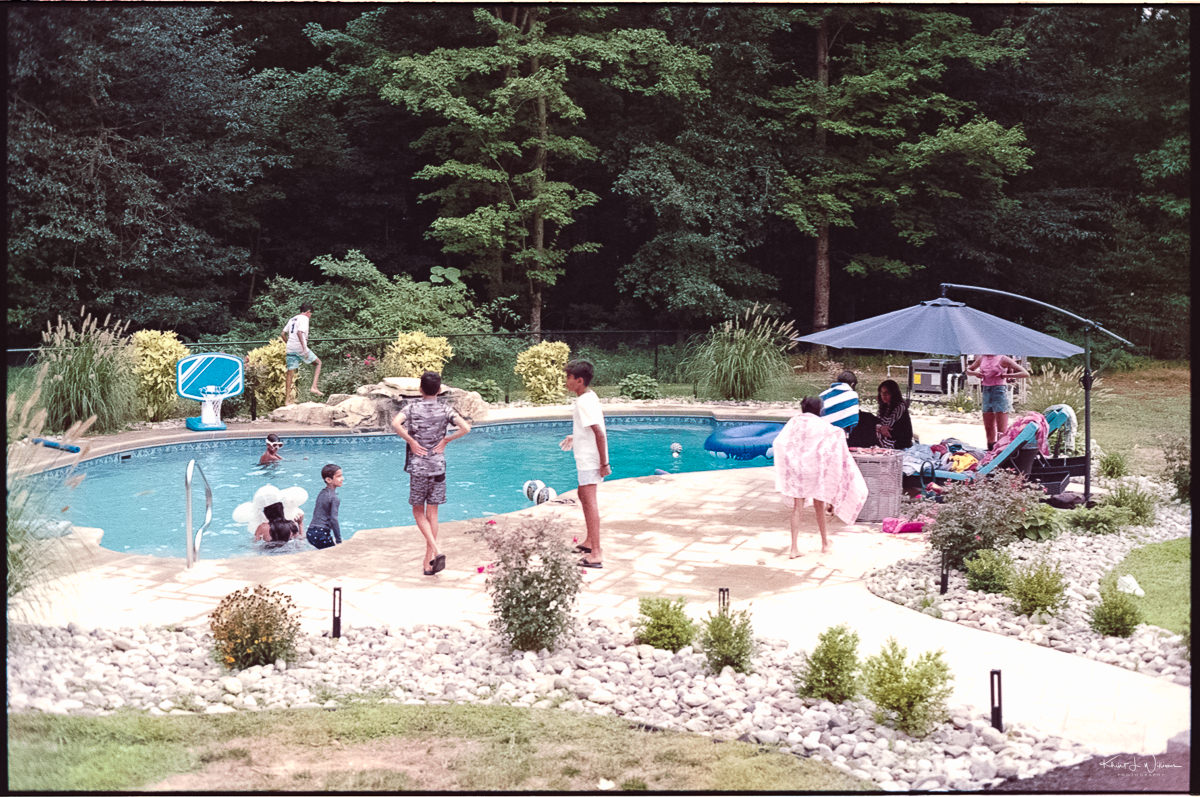
The Minolta X-700 has a range of exposure modes to cater to different shooting scenarios and user preferences. In its day, the Minolta X-700 introduced a revolutionary Program mode, which allows photographers to rely on the camera's built-in exposure program. In this mode, the camera automatically selects both the aperture and the shutter speed based on the lighting conditions. I will typically use this when the lighting changes rapidly between scenes.
The Minolta X-700 has TTL metering, which measures light levels through the lens to the light meter. This technology ensures accurate exposure readings and improves the overall precision of the camera's automatic and manual exposure settings. I am not a fan of using the Sunny 16 rule. I can’t imagine using a camera without TTL metering.
The Minolta X-700 has an Aperture Priority mode, denoted by the "A" on the mode dial. In this mode, I can manually select the desired aperture value, and the camera will automatically adjust the shutter speed to achieve the appropriate exposure. Aperture Priority mode provides greater control over the depth of field. Aperture Priority mode is the default setup on all of my cameras, digital or analogue. As long as the camera can maintain a usable ISO and shutter speed, I have control over what elements in the photograph are in focus. I don’t care much about shutter speed unless I do fast action or long-exposure photography.
The Minolta X-700 allows photographers to create multiple exposures on a single frame, enabling artistic and experimental image compositions. Multiple-exposure photography is something I have done a handful of times on a digital ILC1. It’s not my cup of tea.
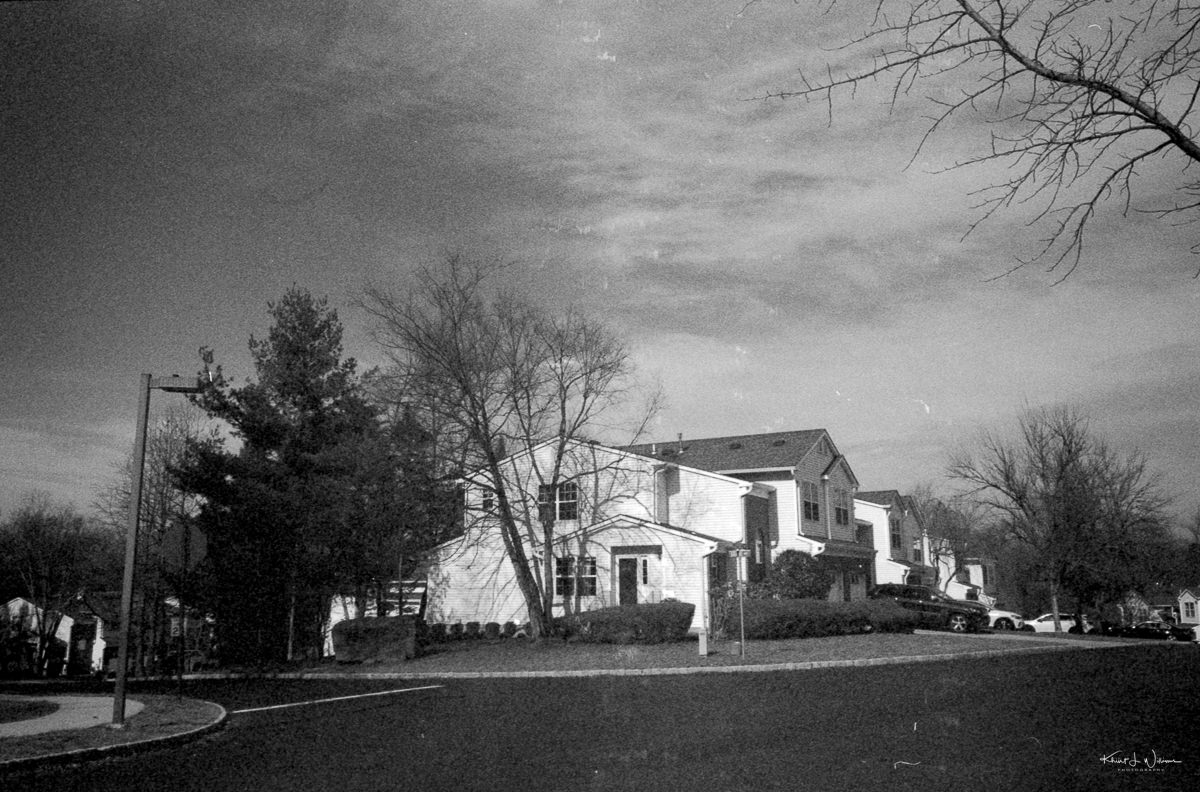
The Minolta X-700 does not have a Shutter Priority mode. I expect to photograph slow-moving (street scenes, etc.) or stationary subjects (landscapes)—the Aperture Priority mode is good enough for most of what I intended to photograph.
The Minolta X-700 has a wide range of shutter speeds, from 1 second to 1/1000th of a second. This range allows me to capture subjects in various lighting conditions, from long exposures to freeze fast-moving action. In traditional mechanical shutters, the speed is set using discrete settings, such as 1/1000, 1⁄500, 1⁄250, and so on. However, the Minolta X-700's shutter operates differently. In aperture priority mode, the Minolta X-700's step-less shutter mechanism utilises an electronically controlled cloth focal-plane shutter. Instead of having fixed shutter speed settings, the camera can adjust the shutter speed continuously within a specific range.
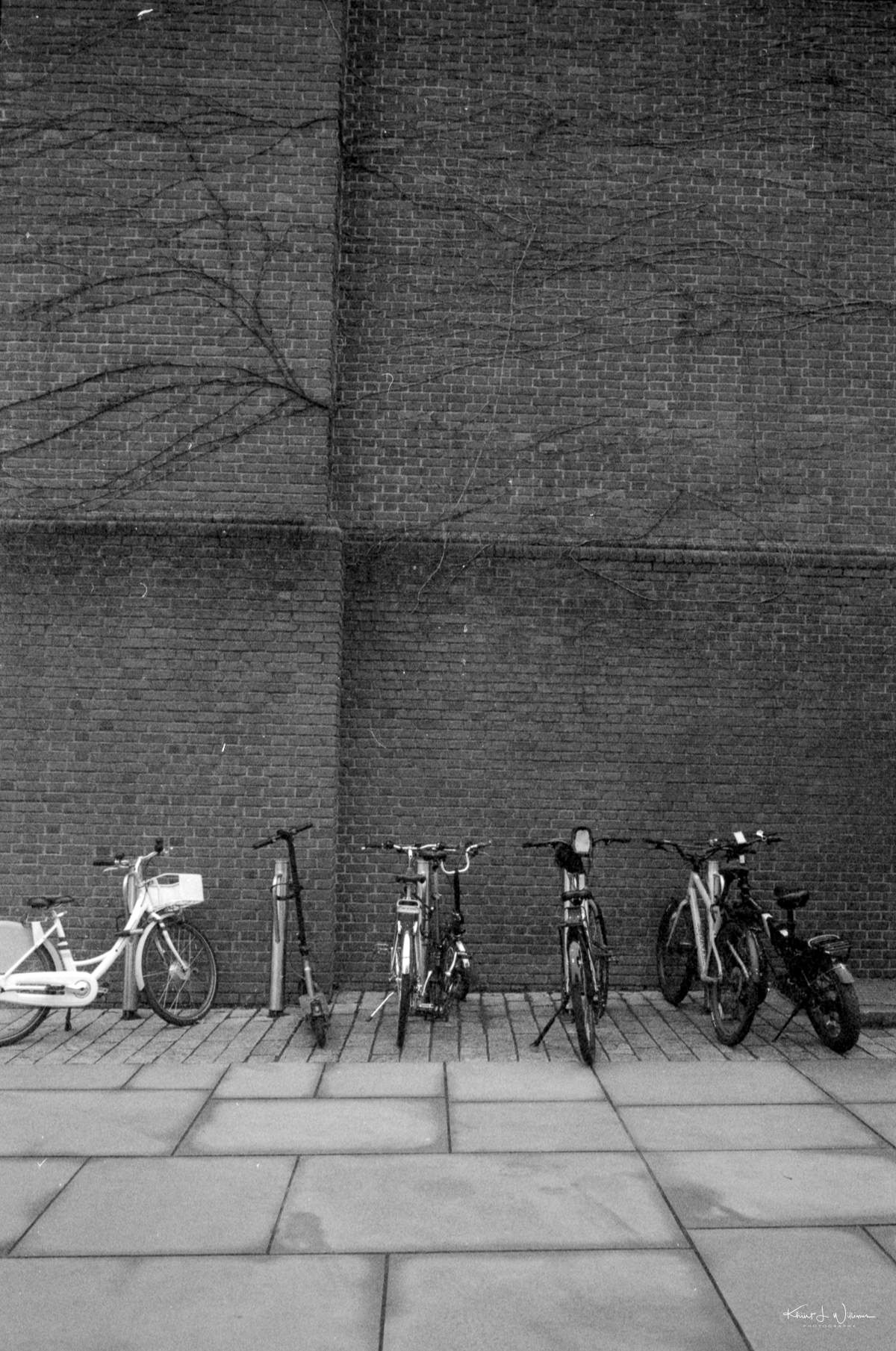
The Minolta X-700 features a Manual mode, marked by an "M" on the mode dial. In this mode, I can control the aperture and the shutter speed settings for precise exposure adjustments based on personal preferences or creative needs. Manual mode is useless in any situation (e.g. bird photography, sports, street) requiring quick adjustments to aperture and shutter speed. I rarely use this mode unless I photograph landscapes, and even then, I would default to aperture priority mode. f/16 anyone?
The Minolta X-700 has a Bulb mode, designated by a "B" on the mode dial. When the camera is set to Bulb mode, the shutter remains open as long as the shutter button is held down. This mode is ideal for long-exposure photography, such as capturing star trails or fireworks. I have not done any long-exposure photographs on a film camera.
The Minolta X-700 had a flash sync speed of 1/60th of a second. This is the standard sync speed for the camera's built-in flash and compatible external flashes, ensuring proper synchronisation between the flash burst and the camera's shutter operation.
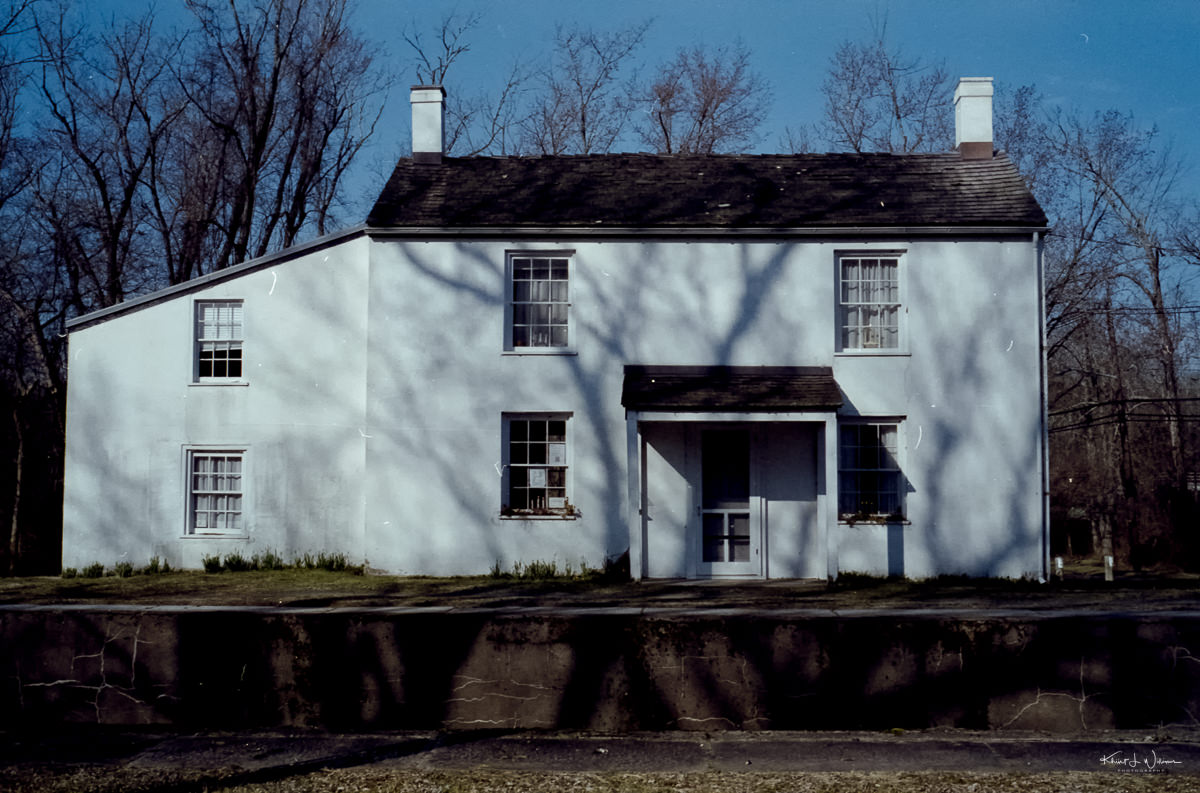
The Minolta X-700 utilises the Minolta SR lens mount system, which is compatible with a vast selection of high-quality Minolta lenses. The Minolta SR lens mount system, also known as the Minolta MC/MD mount, is a widely used lens mount introduced by Minolta in the 1960s. The Minolta SR lens mount system is designed for Minolta's manual focus SLR cameras, including the Minolta X-700. It is a proprietary lens mount specific to Minolta cameras, ensuring compatibility between Minolta cameras and Minolta lenses. I have three lenses, the MD Rokkor-X 50mm f/1.7, MD Rokkor-X 45mm f/2, and MD W.Rokkor-X 28mm f/2.8, all performing perfectly on the Minolta X-700.
The Minolta SR lens mount system gained popularity due to its adaptability. I can also mount lenses from other brands onto their Minolta cameras through adapter rings. This adaptability expands the range of lenses used with the Minolta X-700, providing me with more options. Adapters were available for various lens mounts, including popular mounts like Nikon F, Canon FD, Pentax K, M42 and more. The M42 screw mount is also a popular camera mount system with many lenses. I bought an M42 to SR mount adapter to use my SMC Takumar 55 mm f/2 lens on my Minolta X-700.
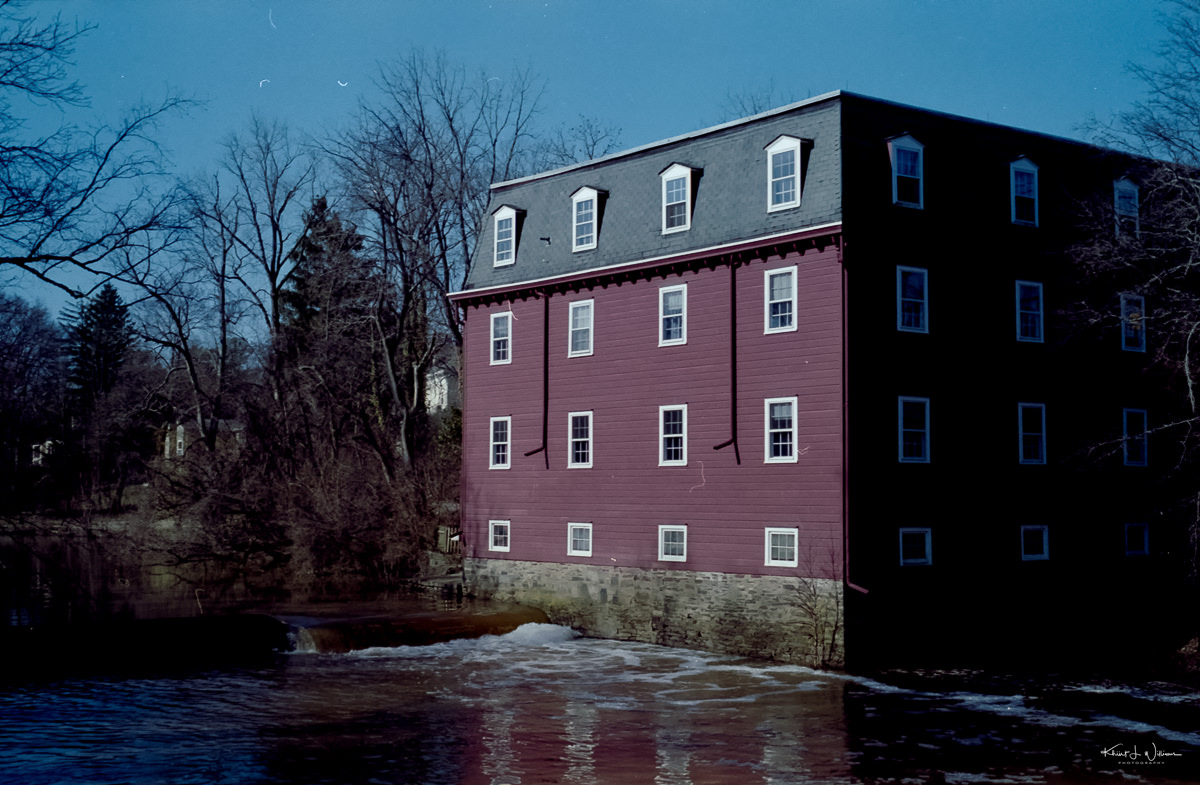
The Minolta X-700 has clean lines, a compact and lightweight body, and a modern appearance. The Minolta X-700 has a relatively small and lightweight body, making it easy to carry and handle. My version of the Minolta X-700 has a black body with metallic accents, including the lens mount, shutter release button, and dials. This colour scheme has a timeless and professional look. The Minolta X-700 has a well-designed grip and ergonomic layout of buttons and controls, allowing for comfortable and intuitive handling.
The Minolta X-700 has a well-designed ergonomic layout, with strategically placed controls and buttons for easy operation. The Minolta X-700 has tactile and responsive control dials and buttons. The controls are well-spaced and logically arranged. I find it intuitive to access and adjust settings quickly. The solid feel of the dials and buttons adds to the overall tactile experience of operating the camera. The Minolta X-700 has a user-friendly design, intuitively placed controls, and a straightforward, easy-to-read interface. The camera's layout is straightforward. I quickly familiarised myself with its functions and settings.
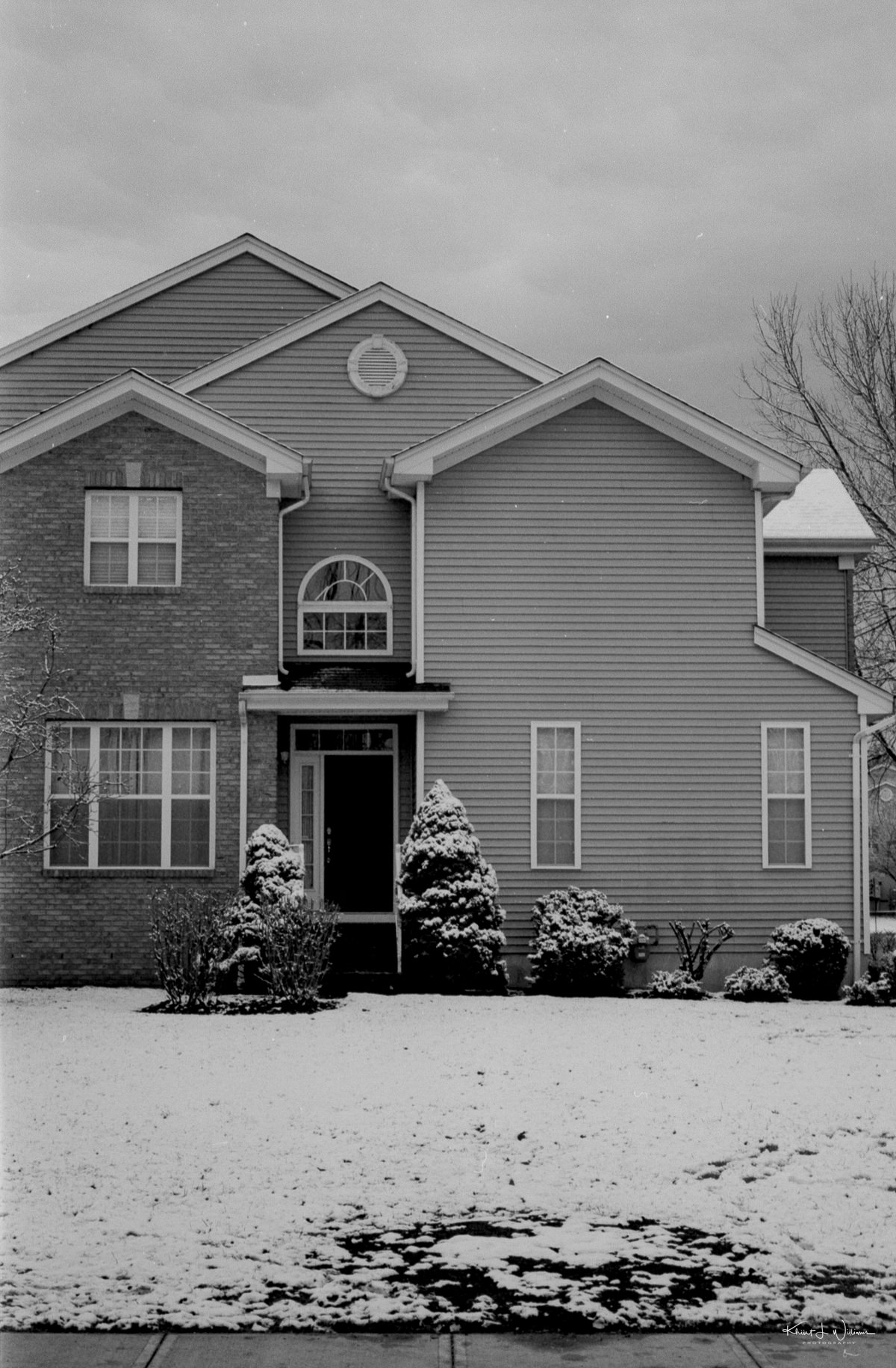
The Minolta X-700 has a bright, clear viewfinder, which makes for accurate composition and focus. The viewfinder is large, and the informative display, including exposure information and focusing aids, enhances functionality and aesthetics. The Minolta X-700's viewfinder comprehensively displays exposure settings, focus indicators, and battery status. This display makes quick and convenient monitoring of camera settings easy while composing.
The Minolta X-700 has a solid feel. The Minolta X-700 has a durable metal chassis and a robust outer shell, ensuring a sturdy and reliable camera body. The metal construction contributed to its overall durability and longevity.
The Minolta X-700 camera grip provides a comfortable and secure hold, allowing me to handle it for extended periods without discomfort. I think that Minolta struck a balance between being lightweight and substantial. While not the lightest camera in its class, the Minolta X-700 has a manageable weight that I can comfortably carry and use for extended periods. Its size and form factor make it portable and convenient for on-the-go photography.
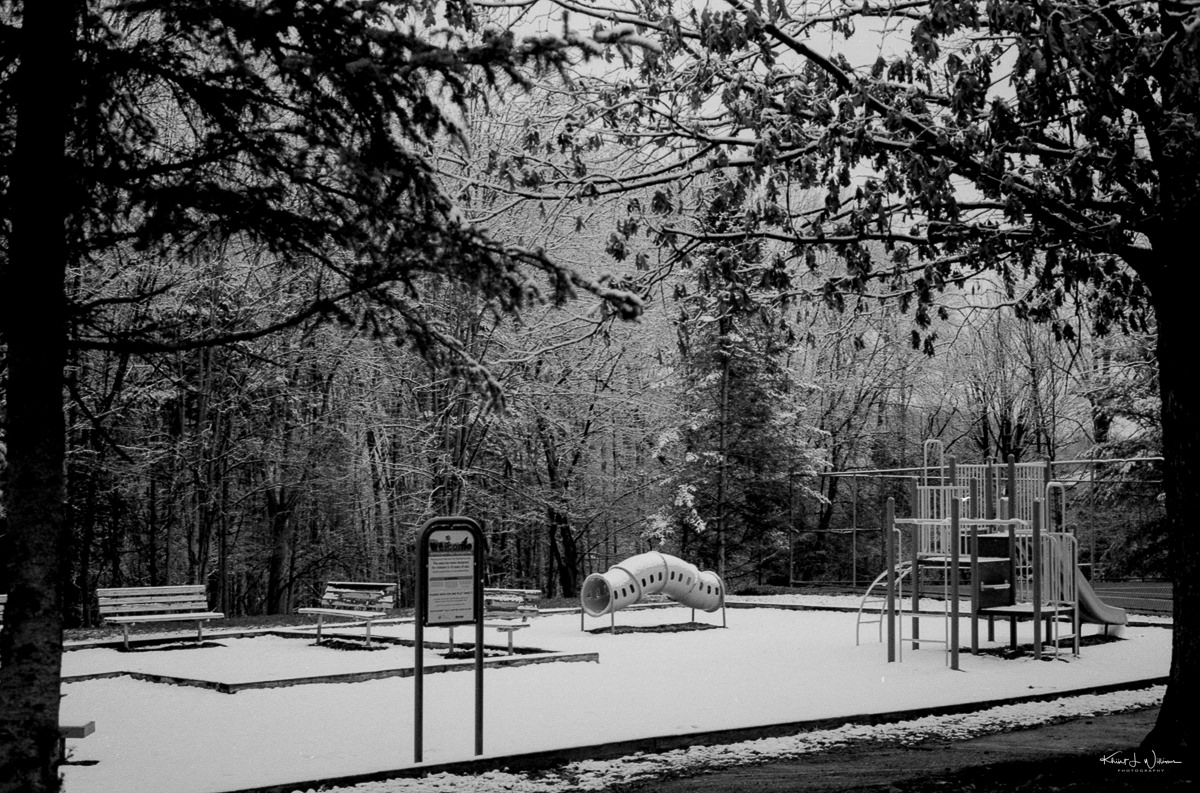
The Minolta X-700 has a sleek, classic design aesthetic that appeals to me.
The Minolta X-700’s timeless design has stood the test of time. Its clean lines, smooth contours, and balanced proportions gave it an elegant and understated look. The camera's design exudes a sense of simplicity and sophistication, which is visually appealing. Minolta used a minimalist design, with minimal ornamentation and a focus on functionality. The camera's exterior features clean, uncluttered surfaces, highlighting the essential elements for intuitive operation.
The Minolta X-700 uses high-quality materials, including a sturdy metal chassis and a durable outer shell. The choice of materials ensures durability and adds a premium feel to the camera's design.

The Minolta X-700 prominently displays the iconic Minolta branding on the camera body, including the Minolta logo and model name. These brand markings further added to the camera's aesthetic appeal to me and represented Minolta’s legacy and reputation as a reputable camera manufacturer.
The design aesthetic of the Minolta X-700 successfully blends elegance, functionality, and a minimalist approach. Its timeless design, premium materials, and attention to ergonomics contributed to a visually pleasing and user-friendly camera that photographers could be proud to carry and use.
- ILC is an acronym for interchangeable lens camera. The key feature of an interchangeable lens camera is its ability to detach and swap lenses. This includes film cameras and digital cameras. ?
